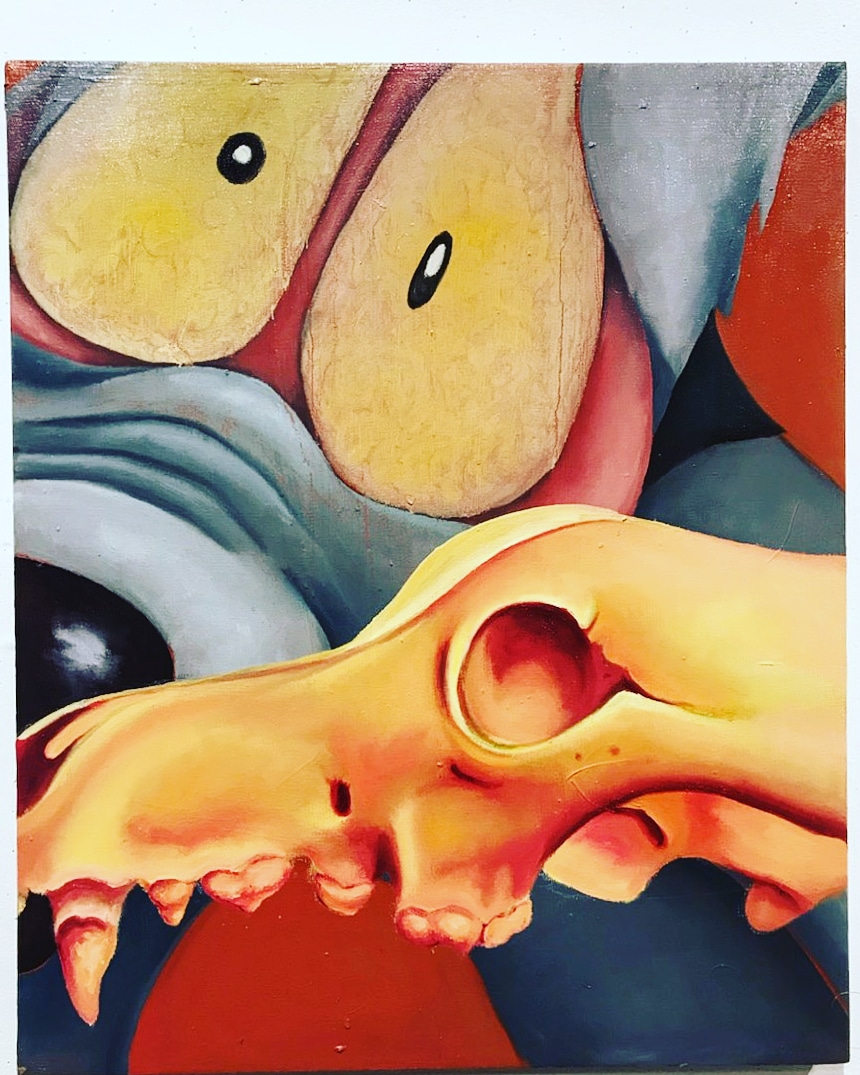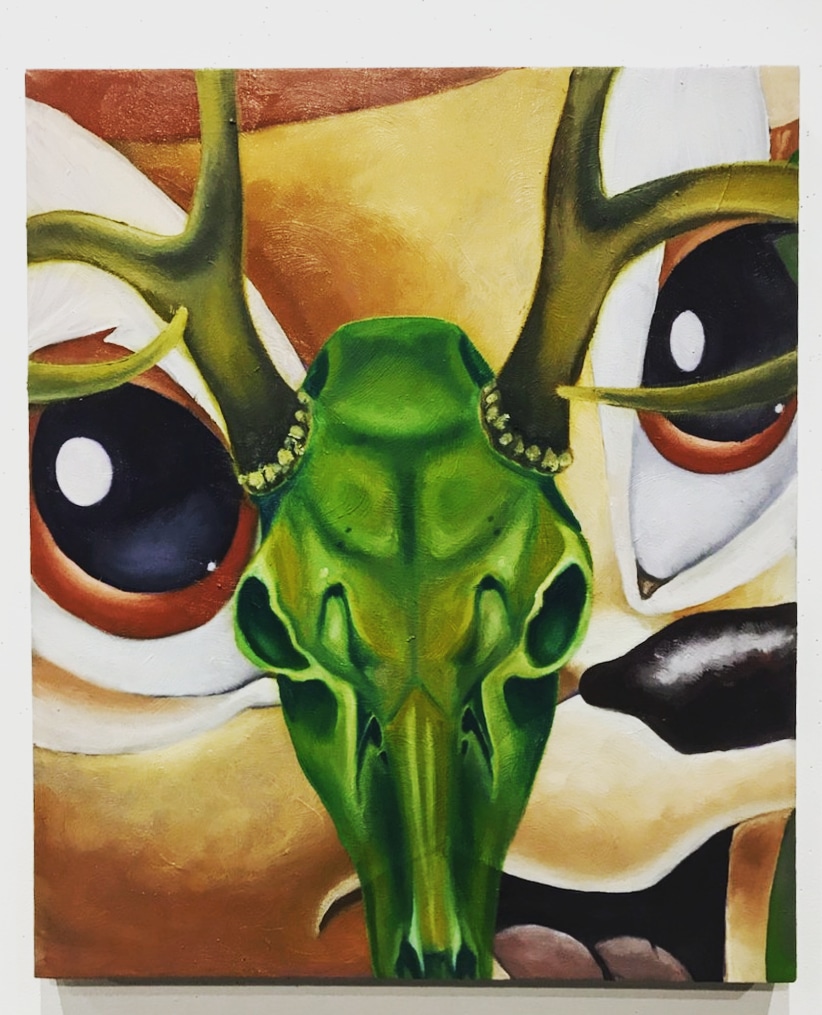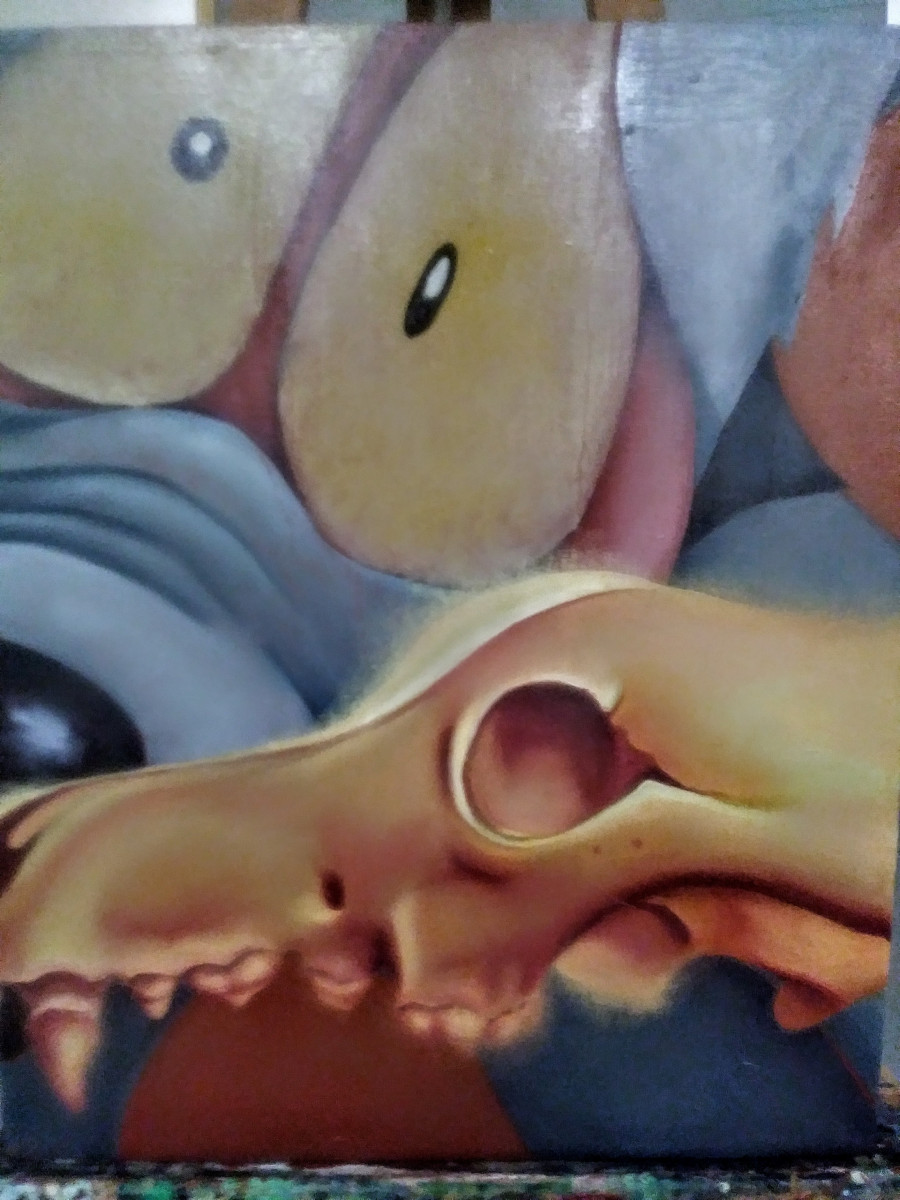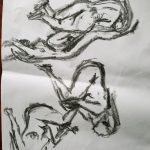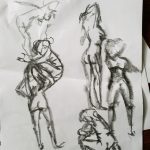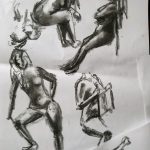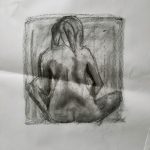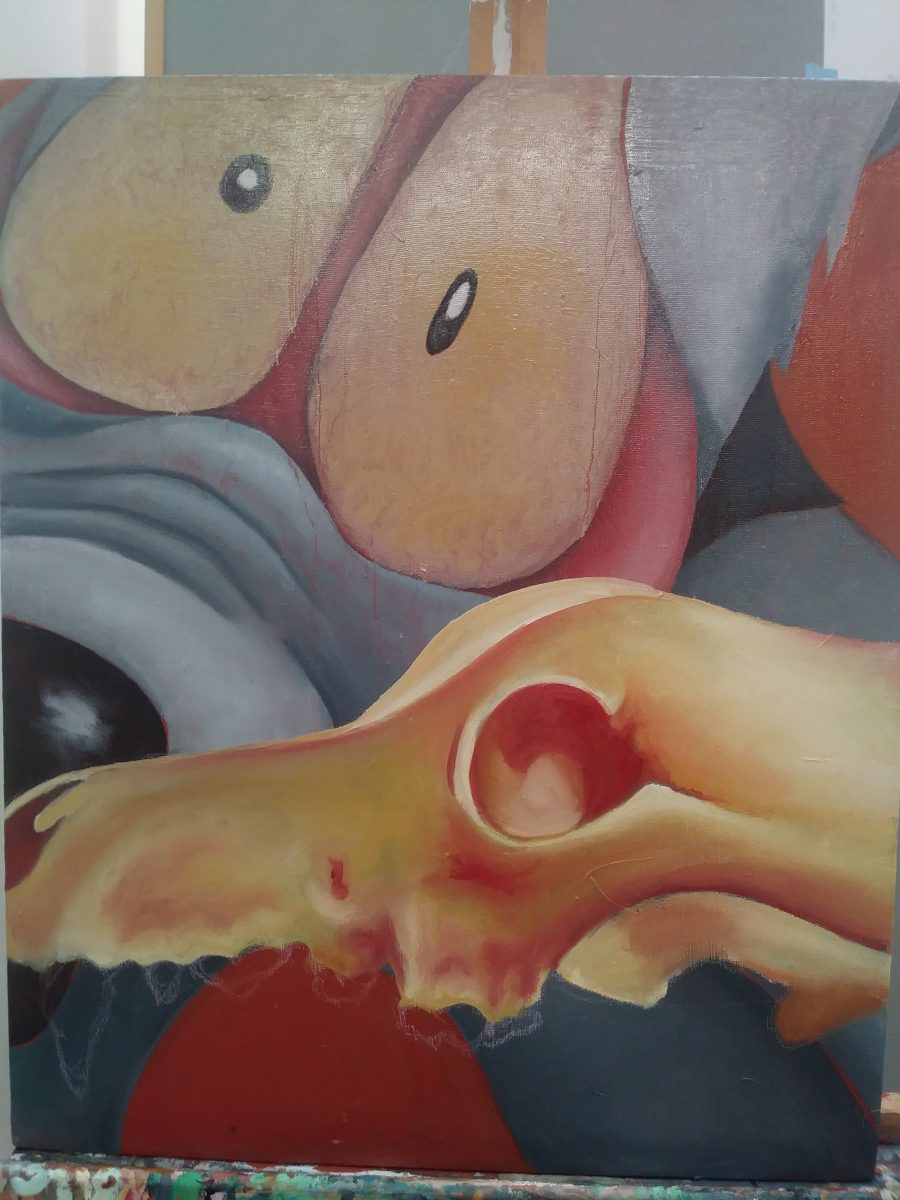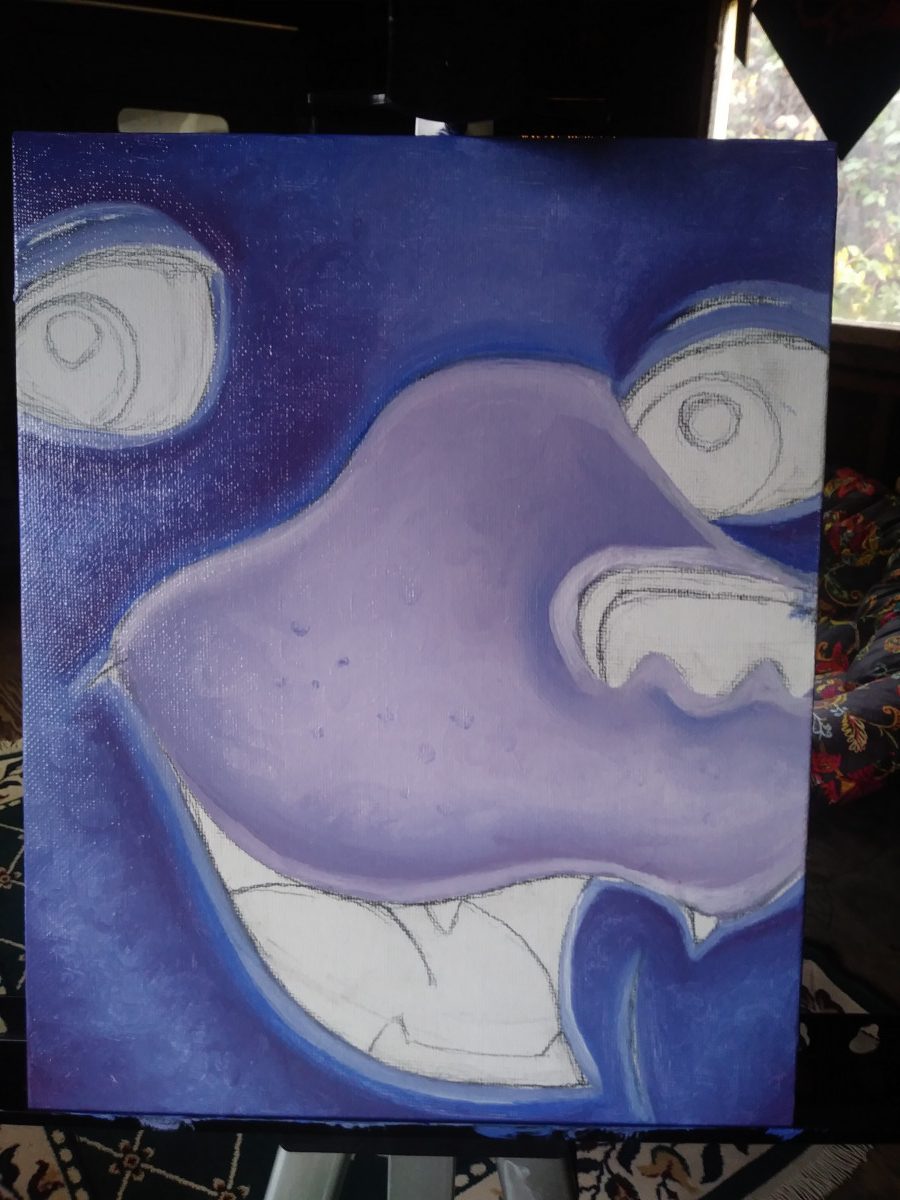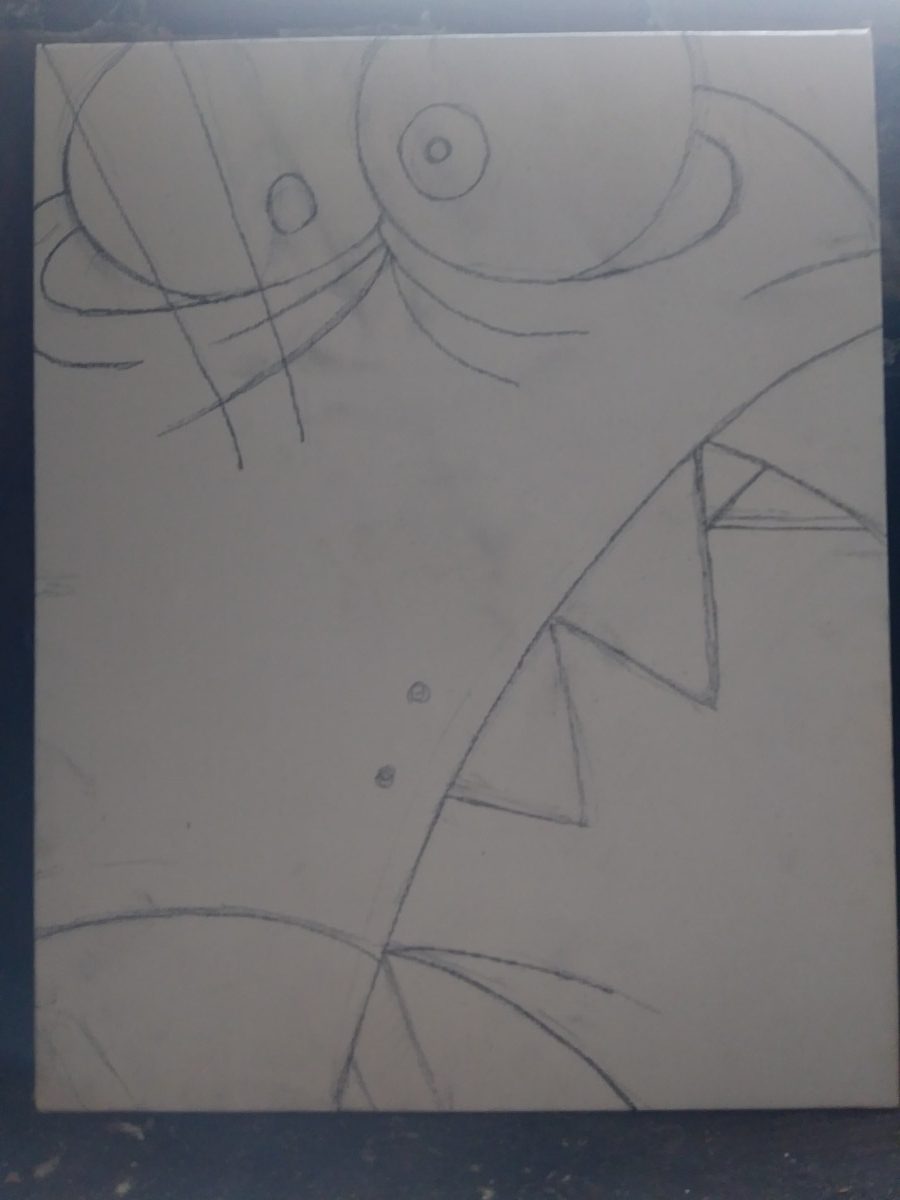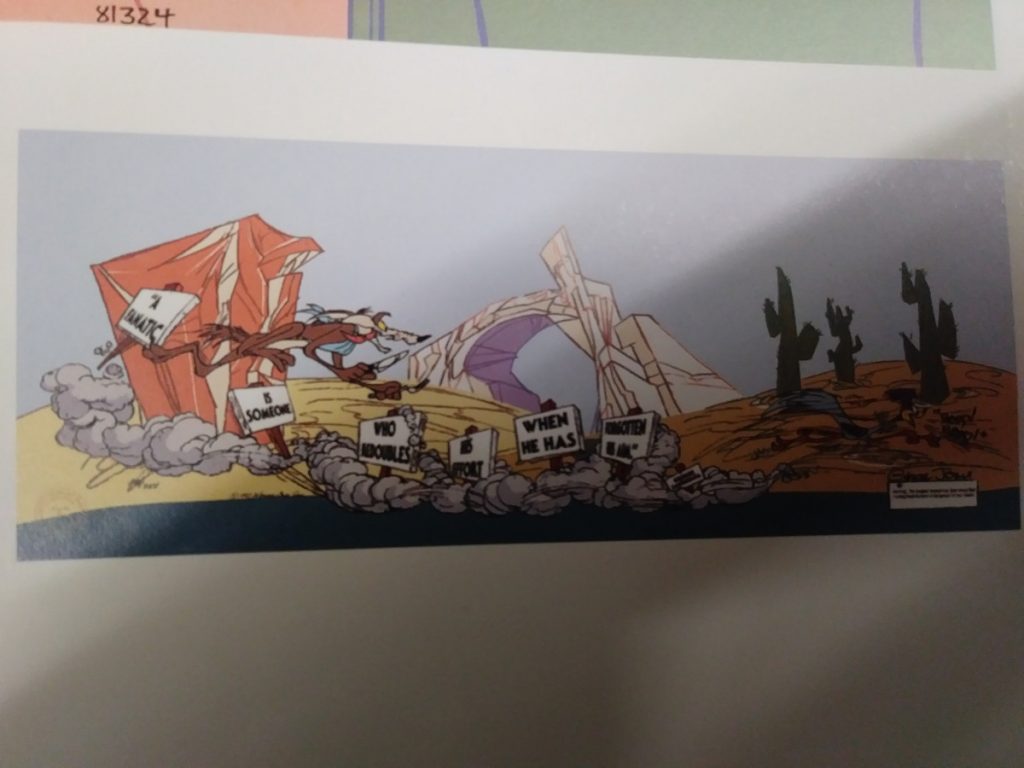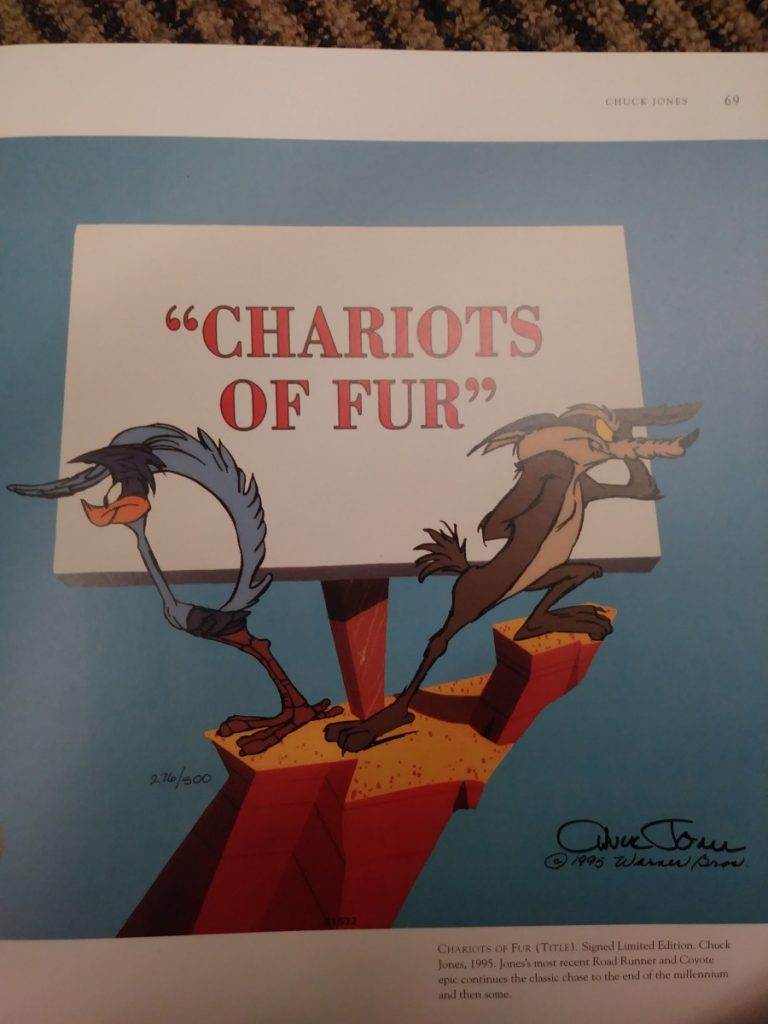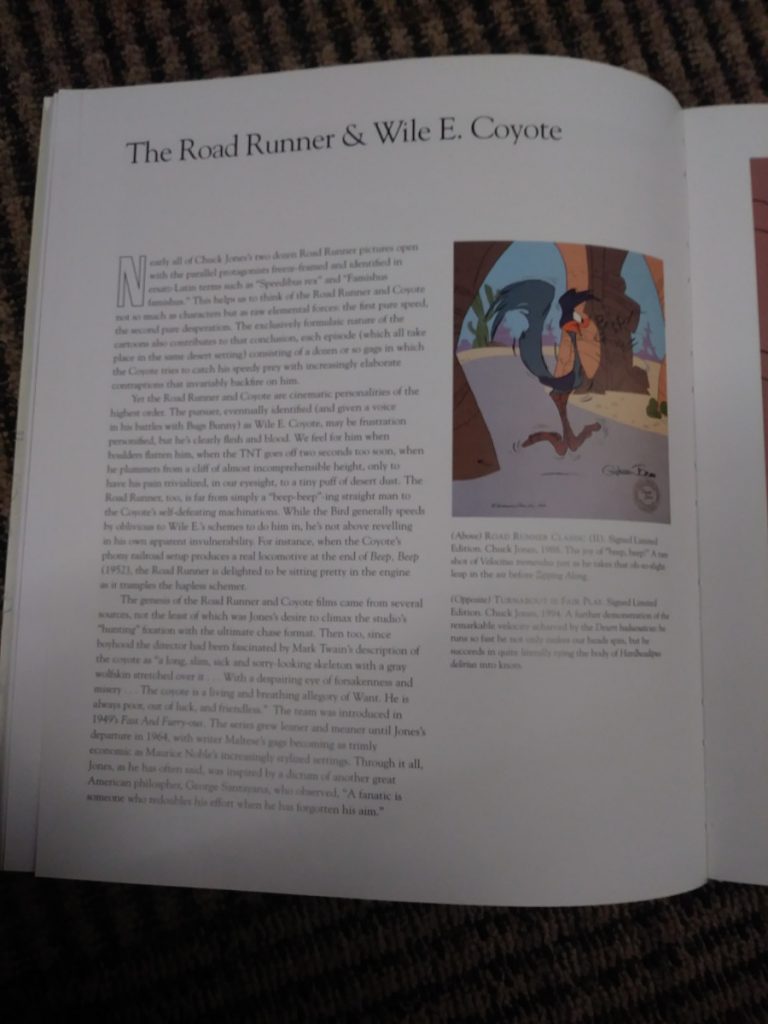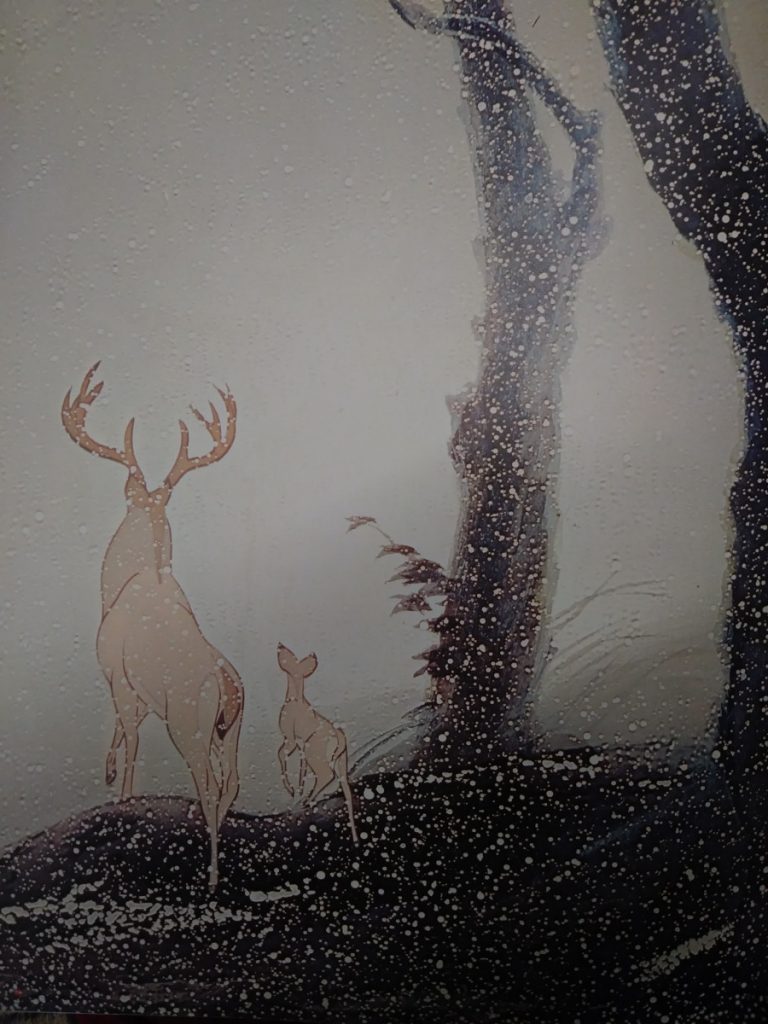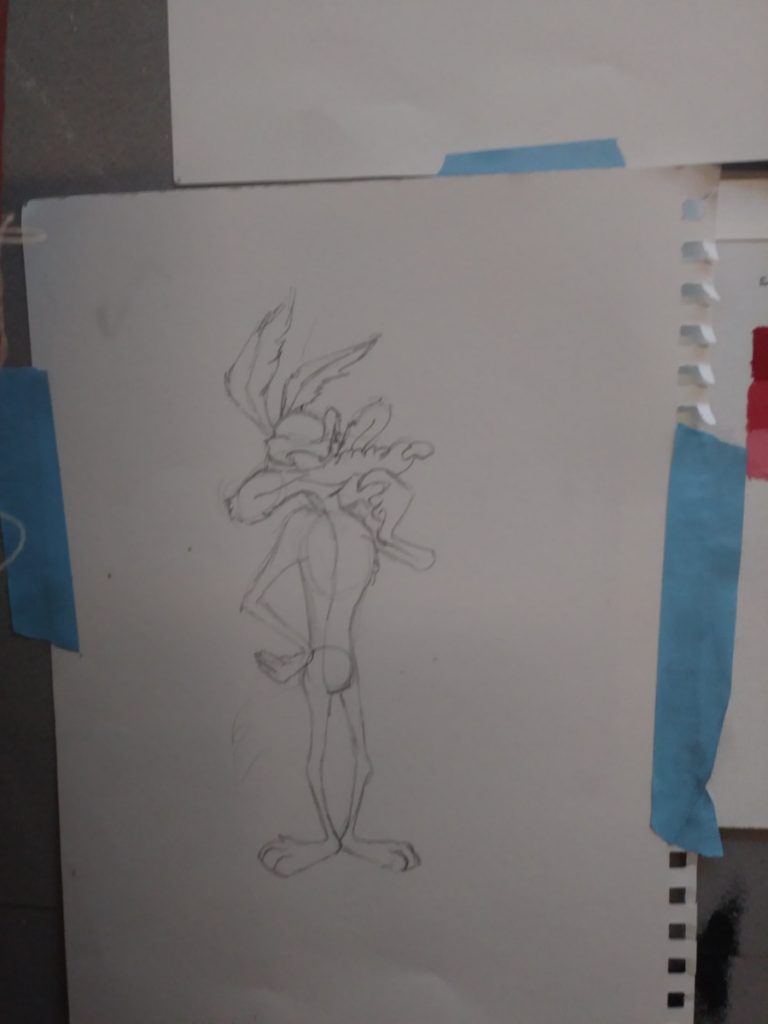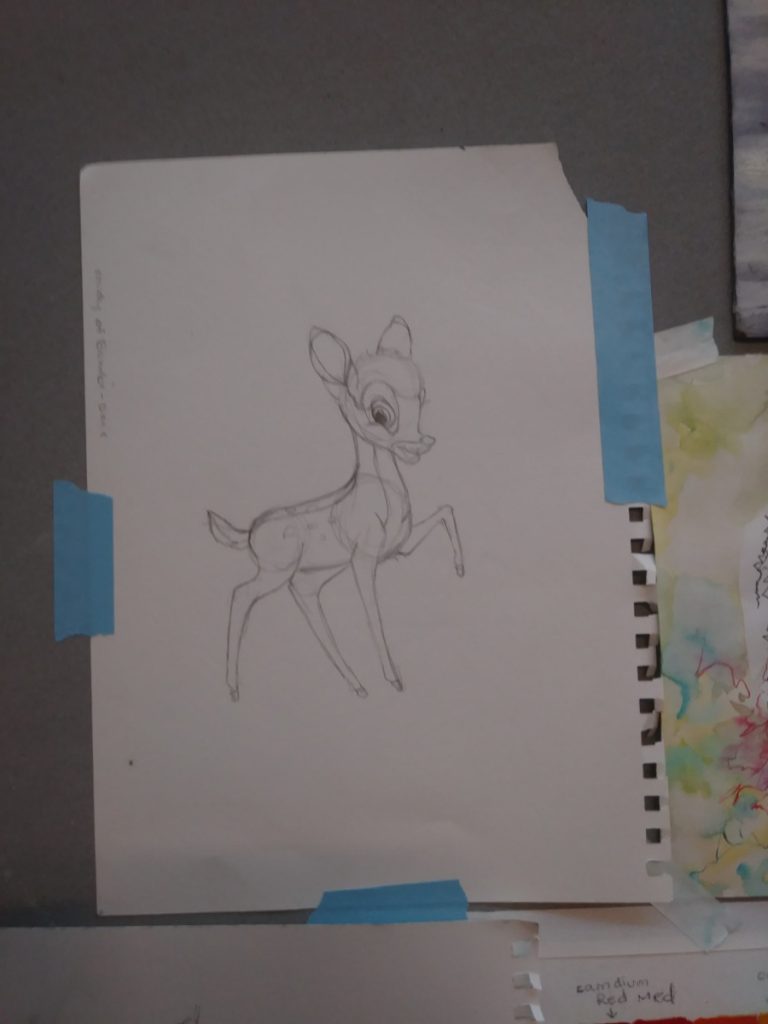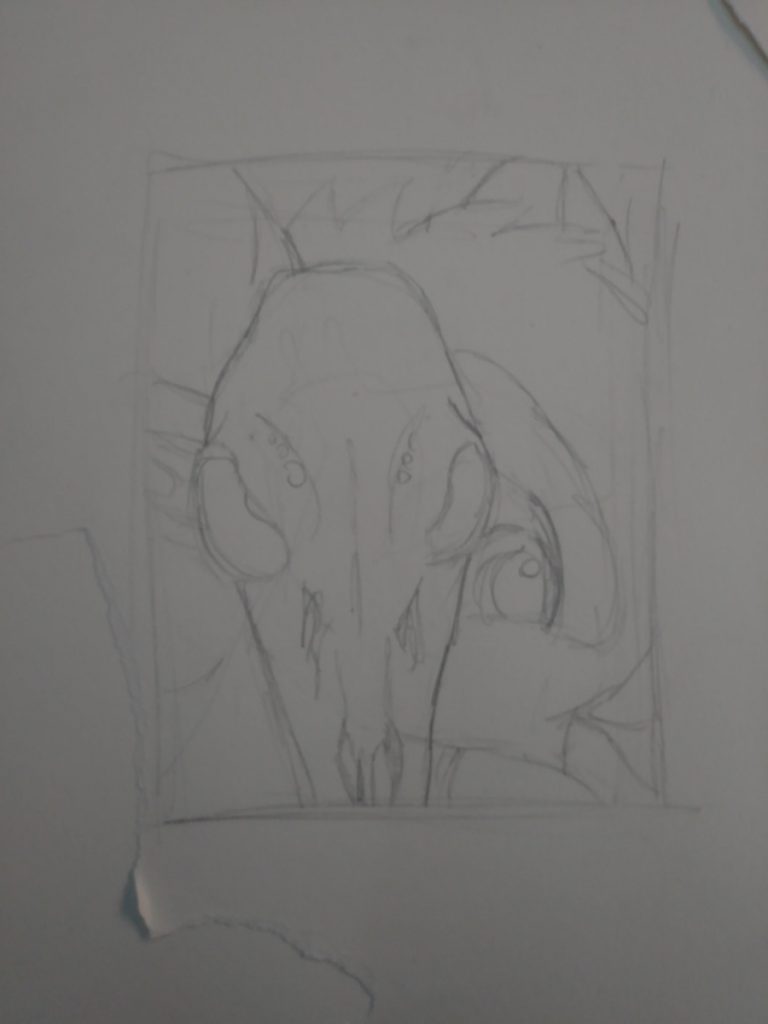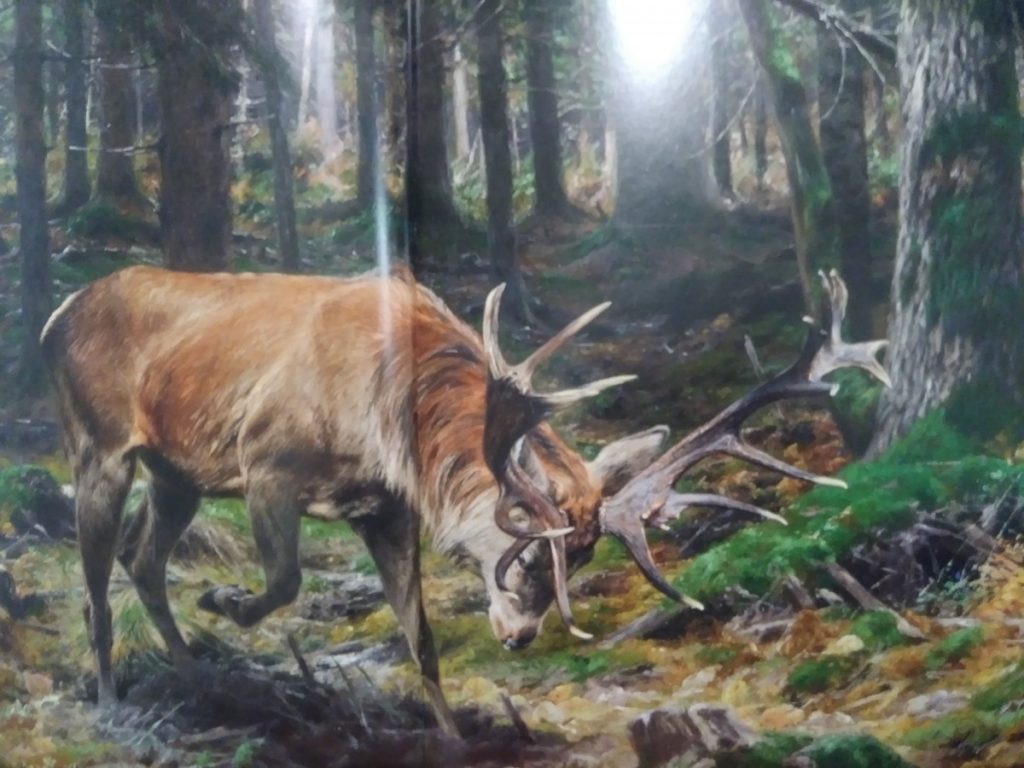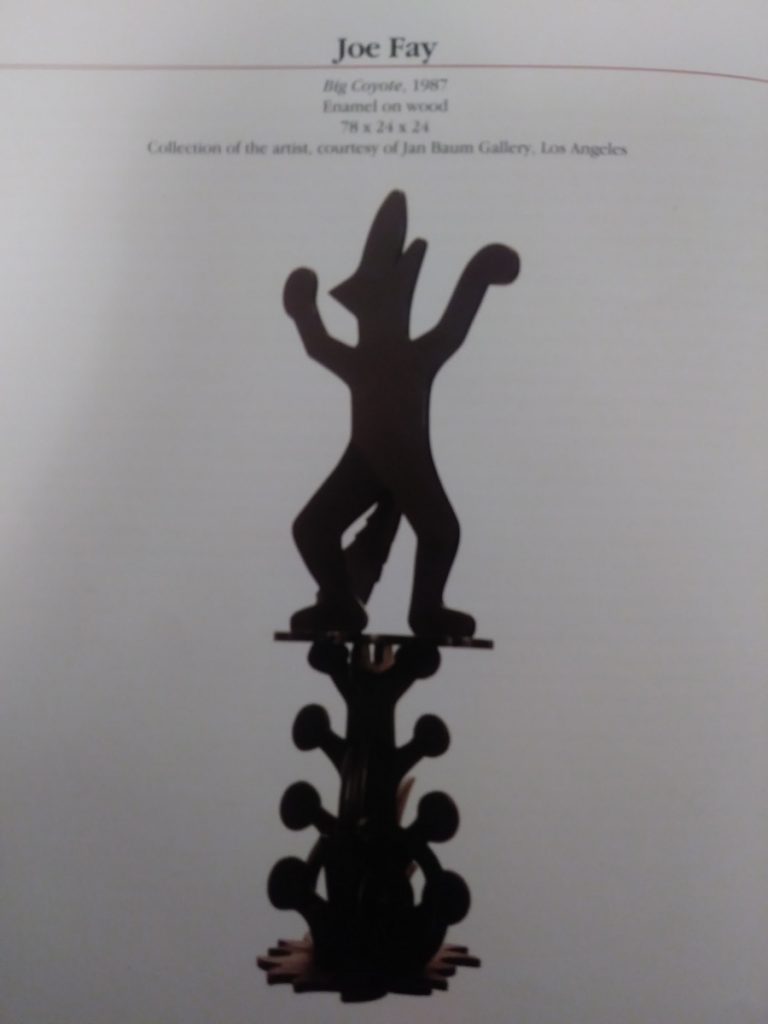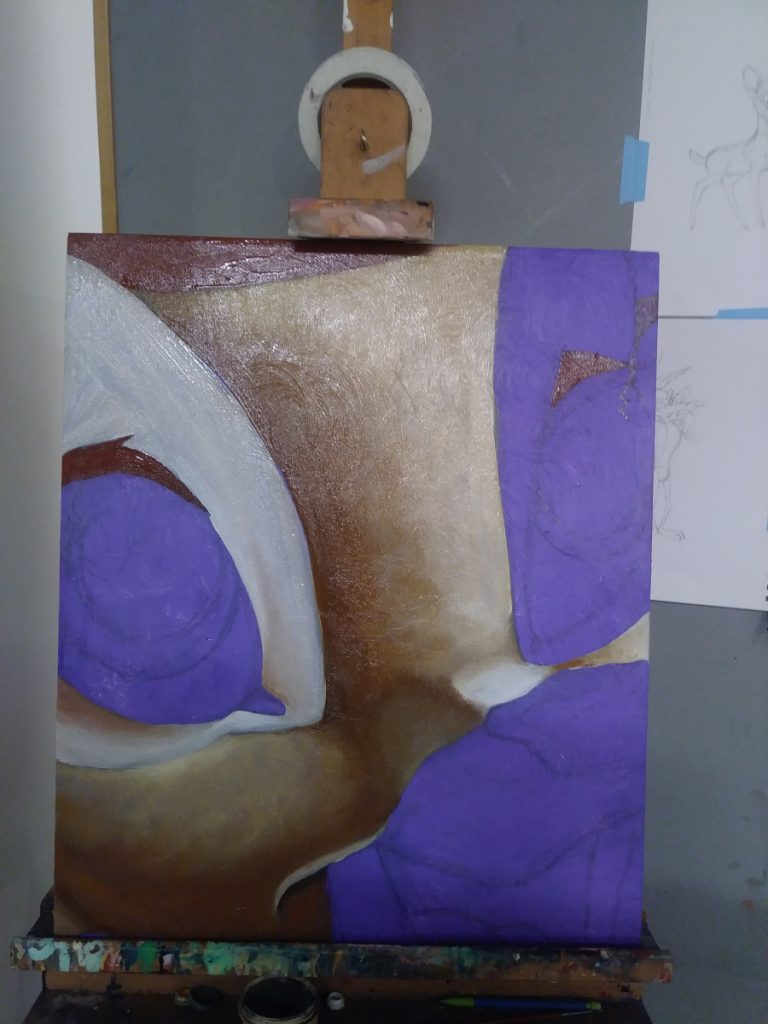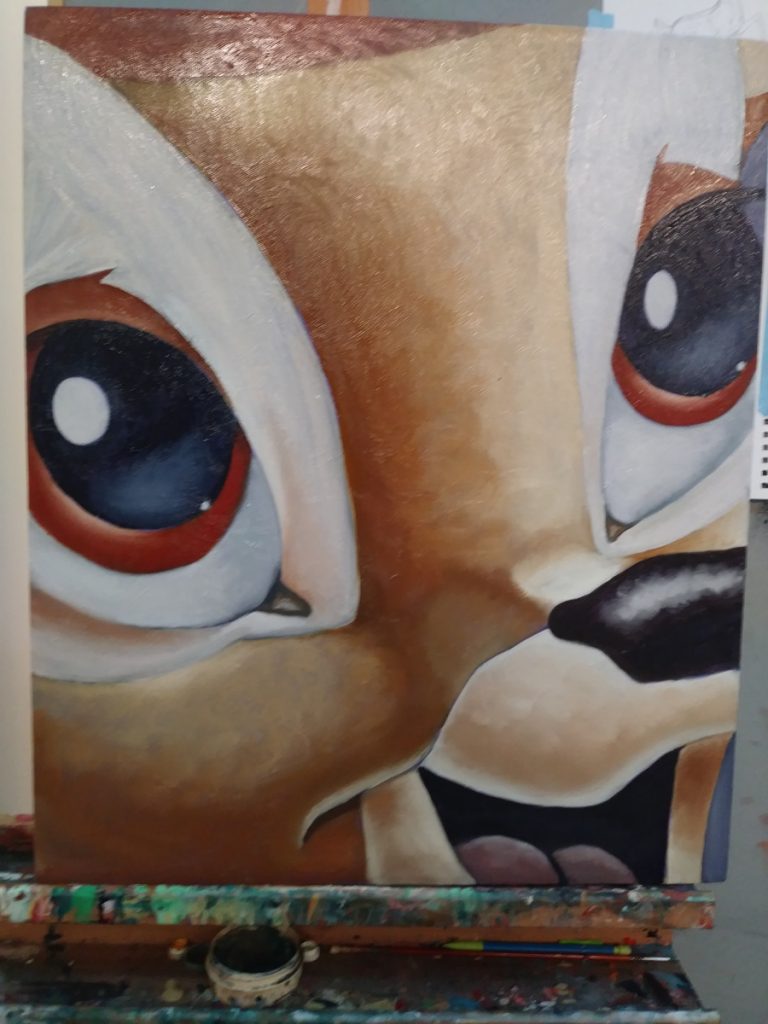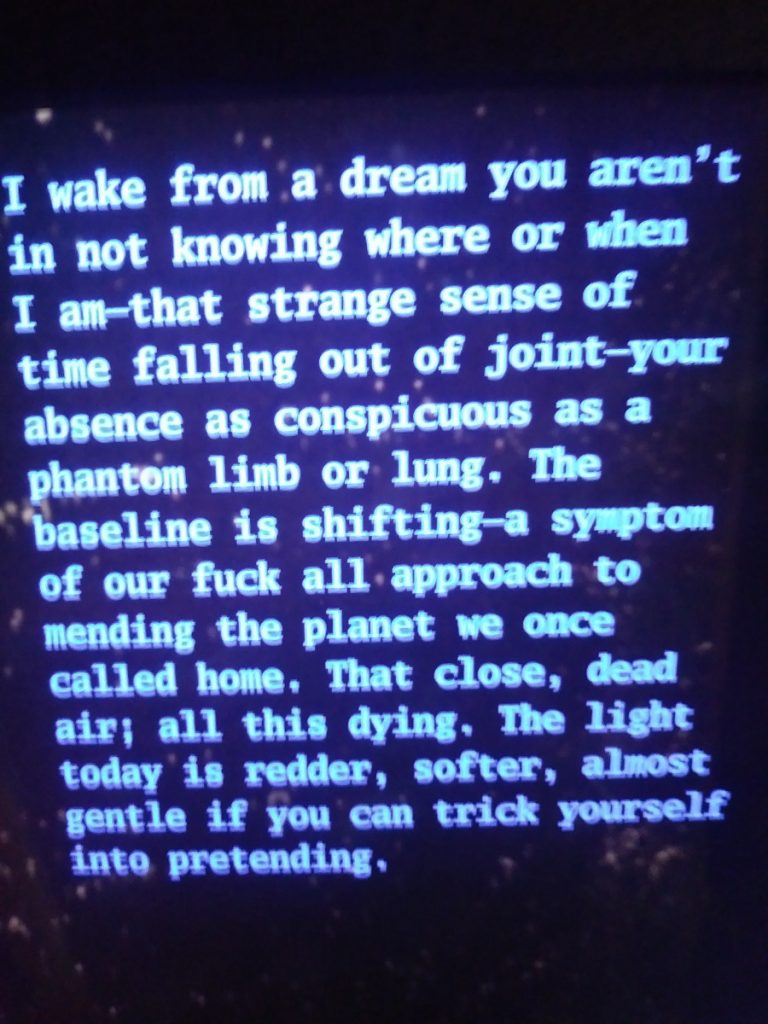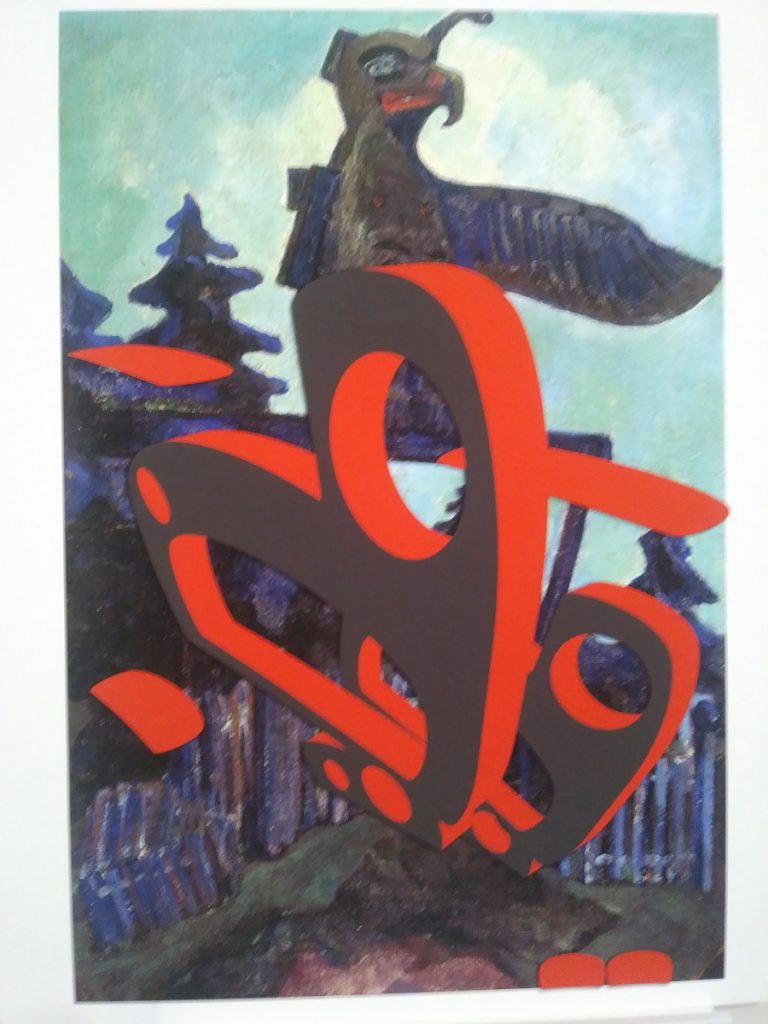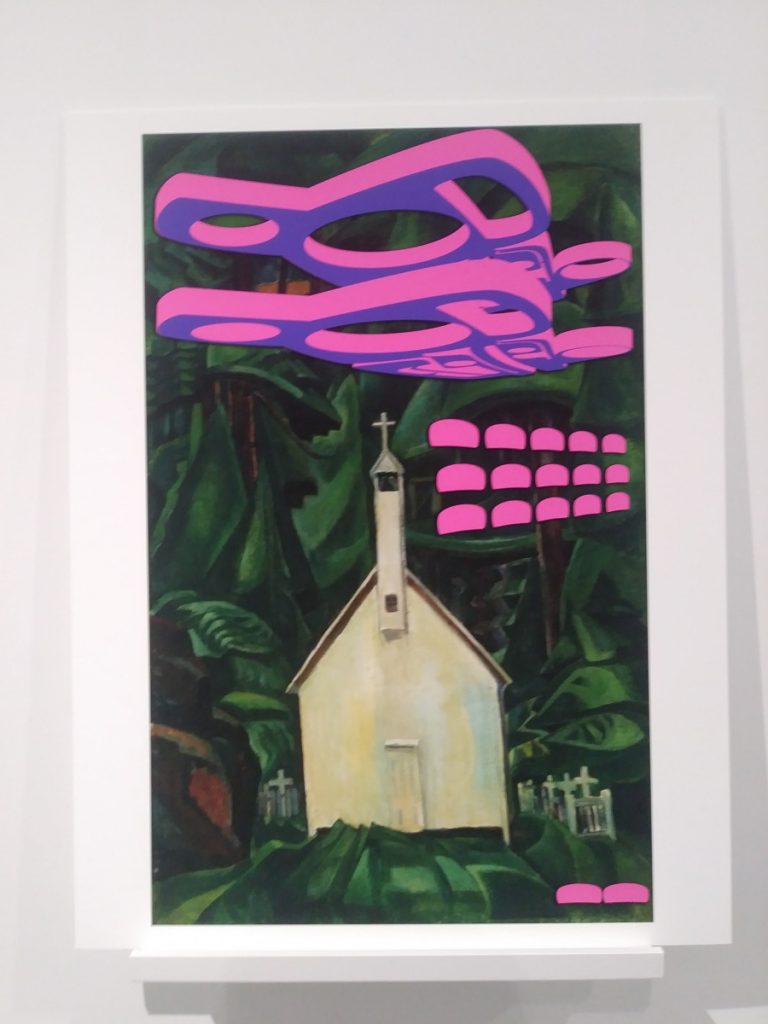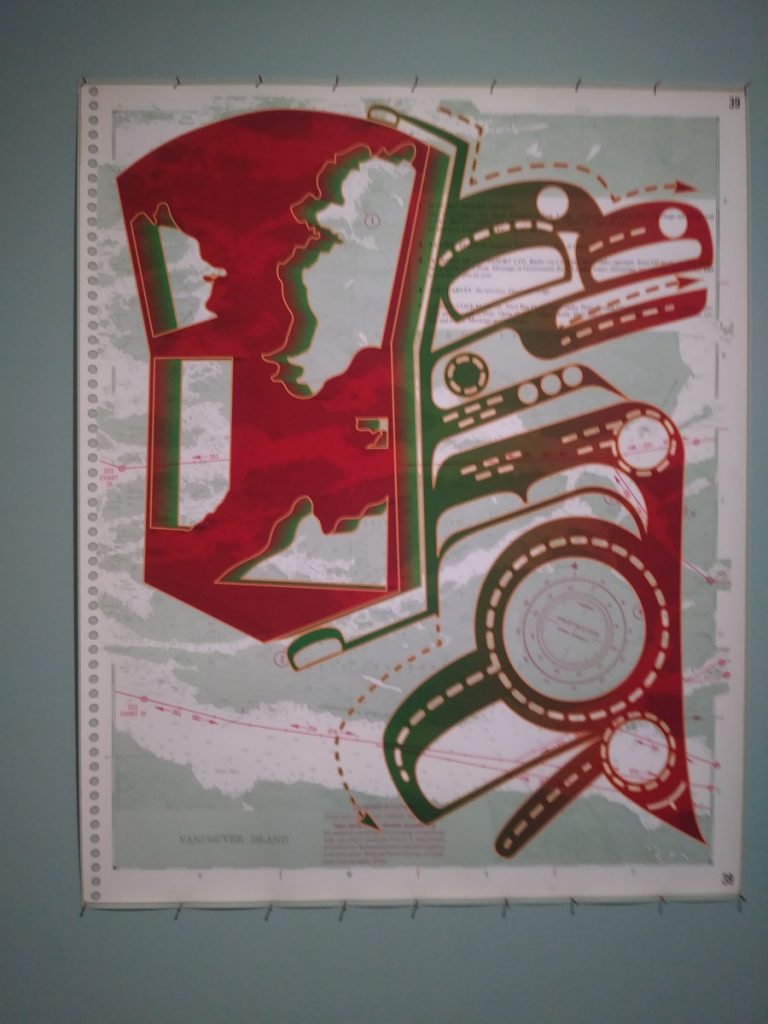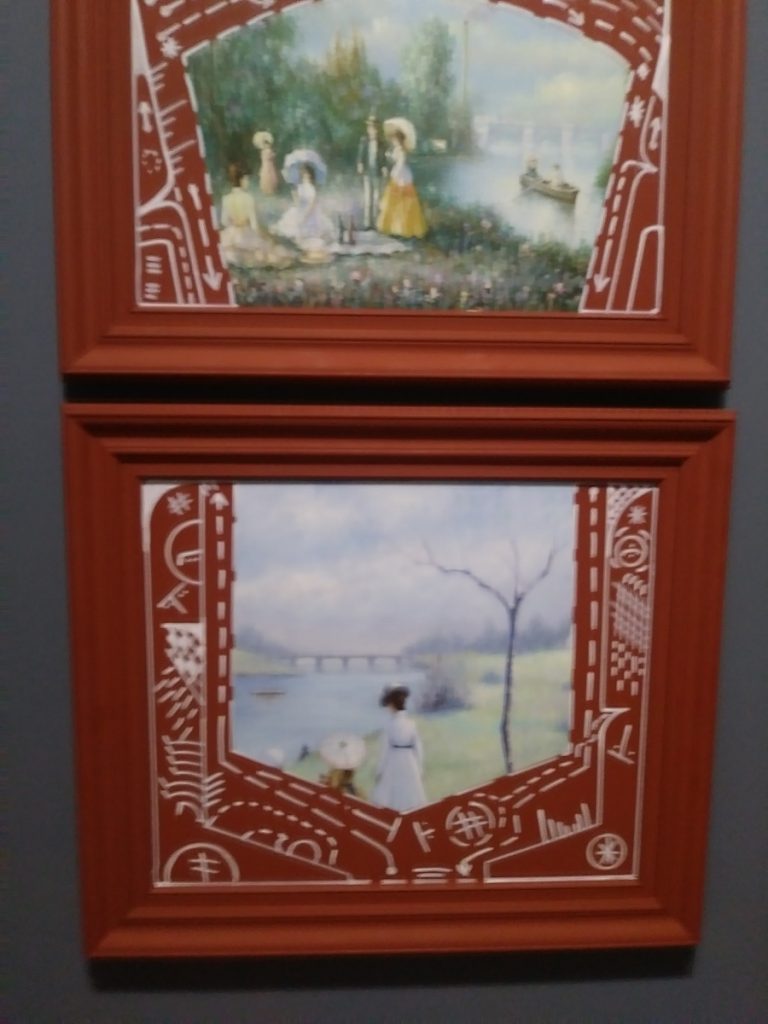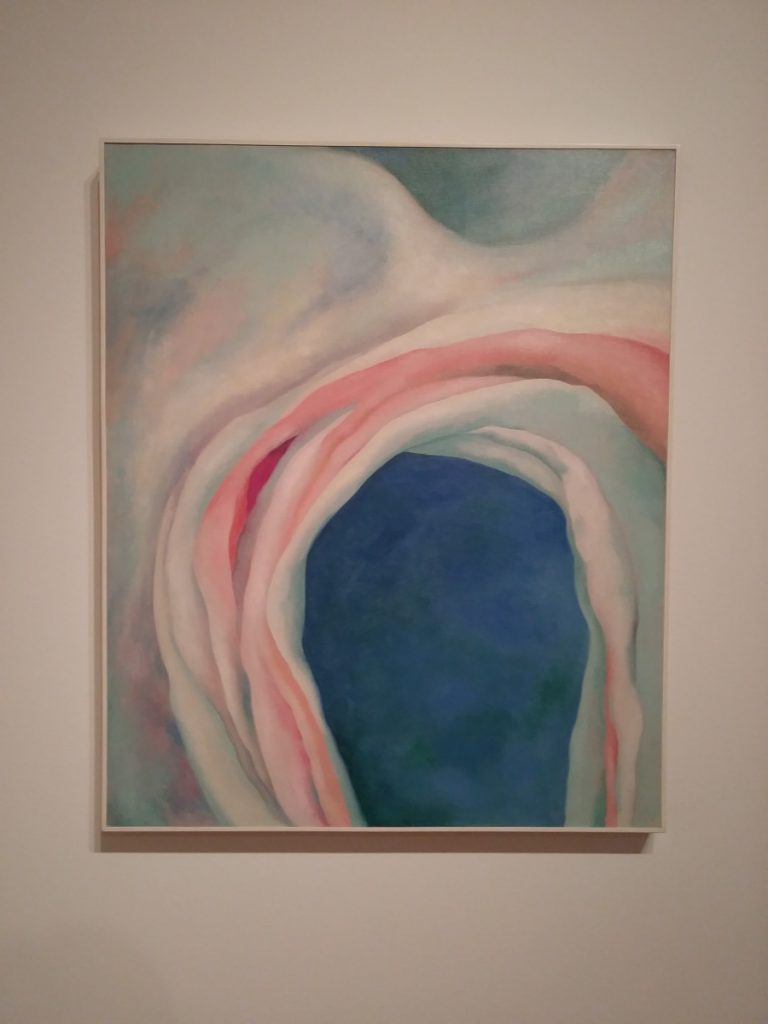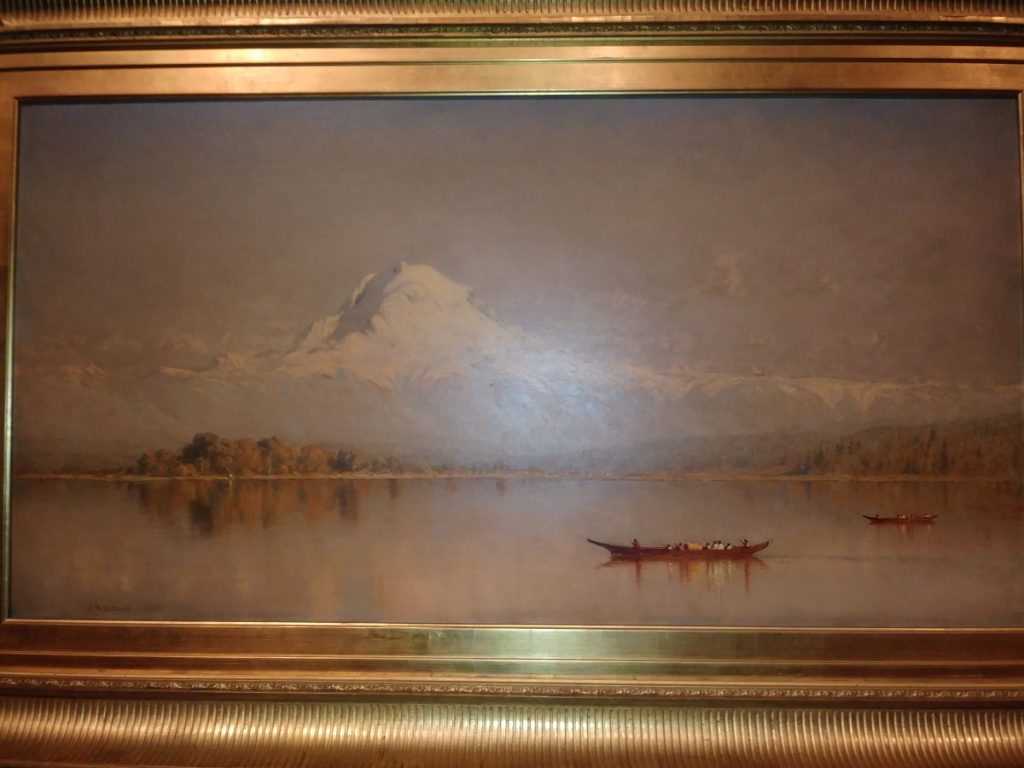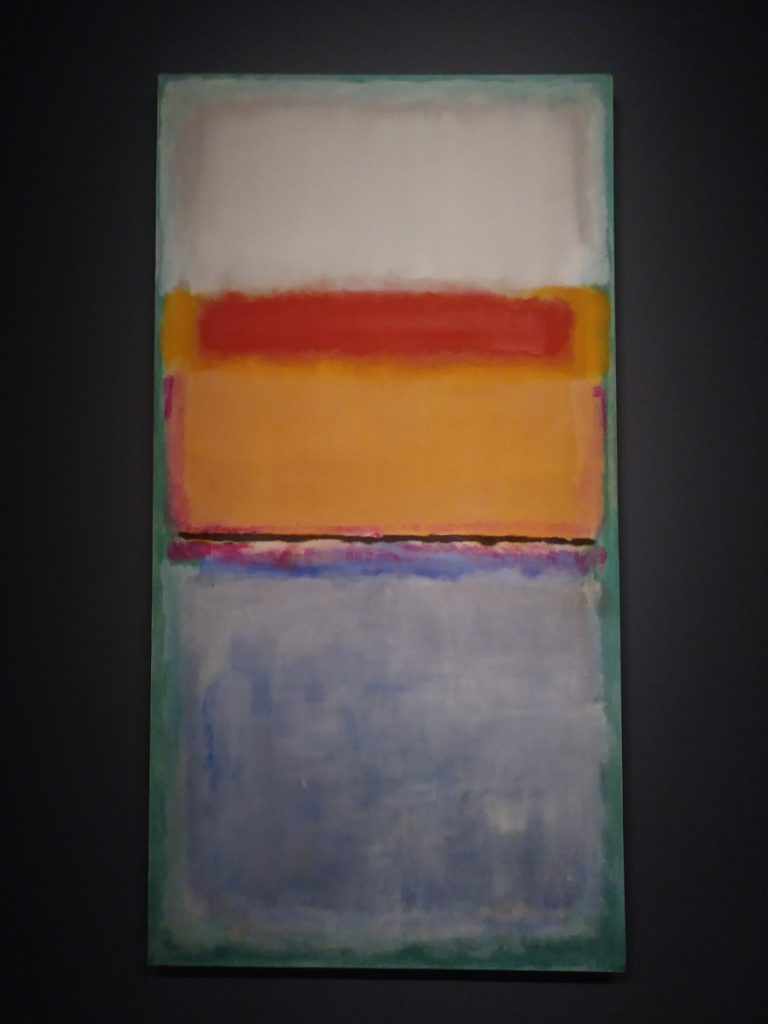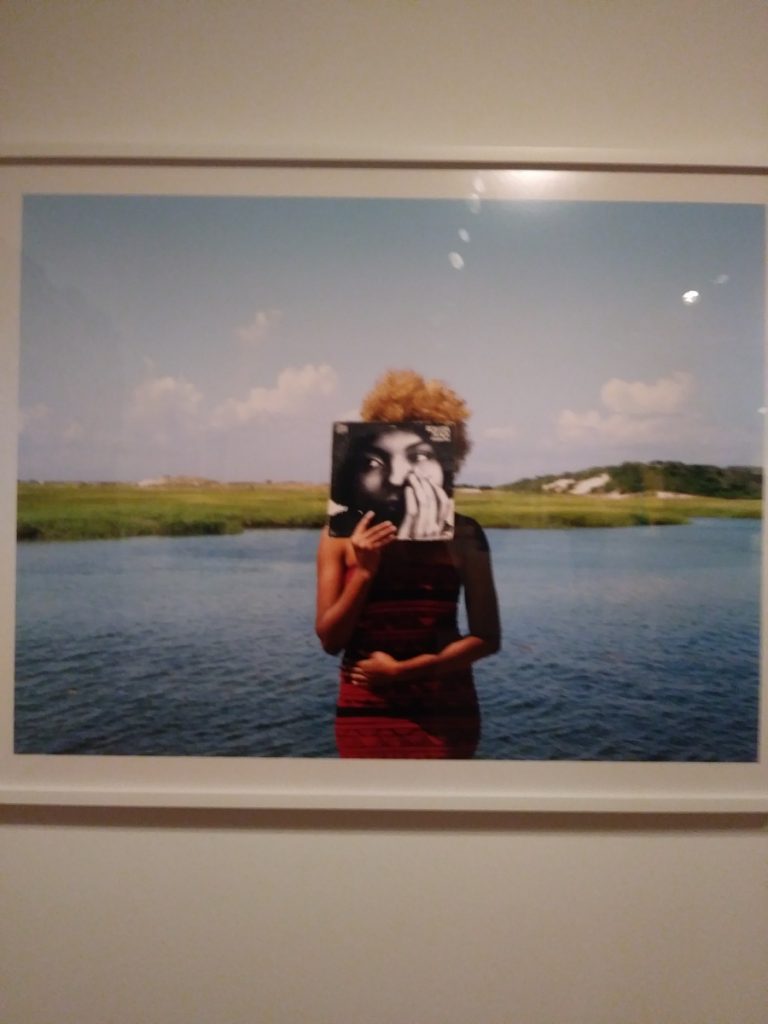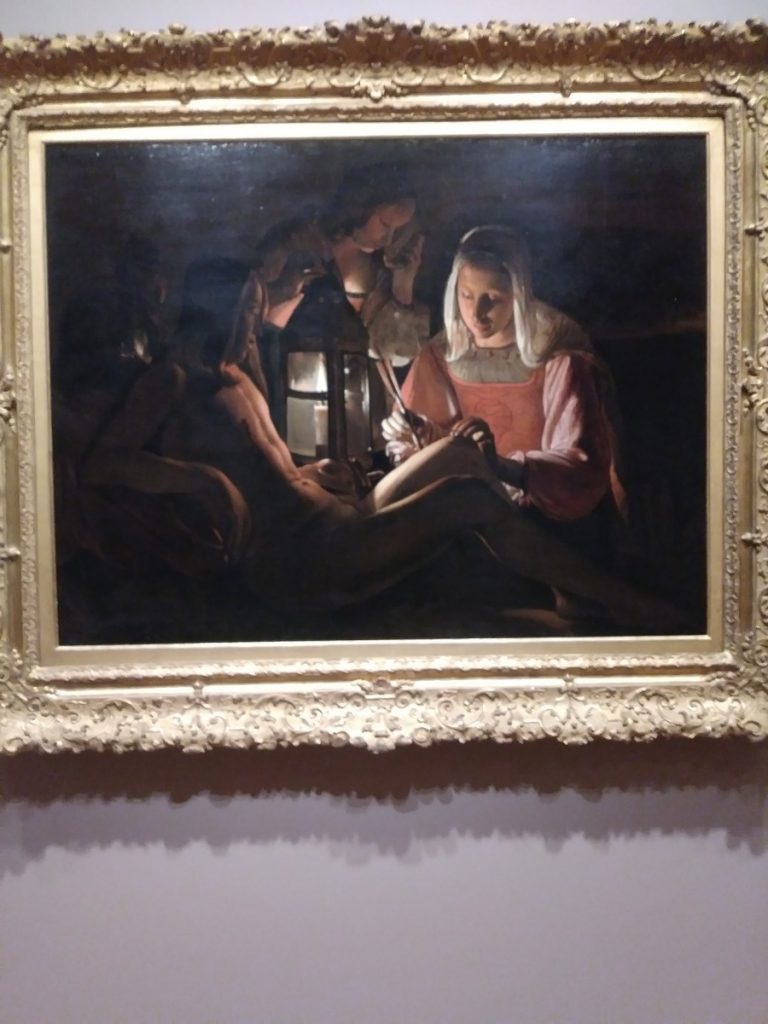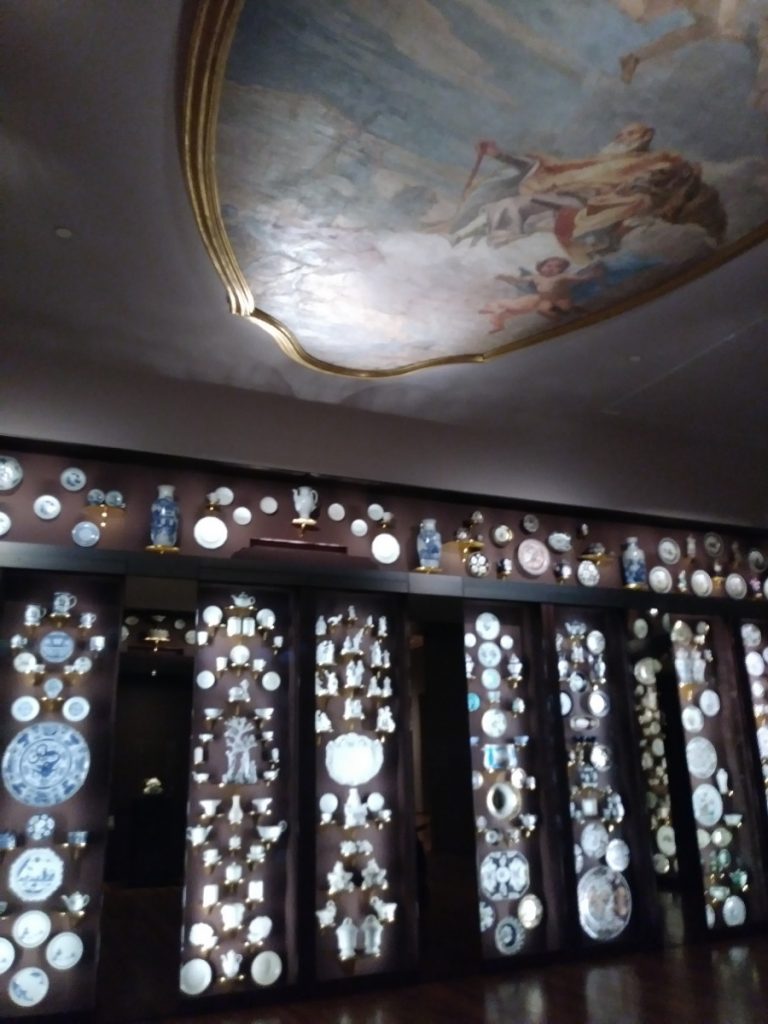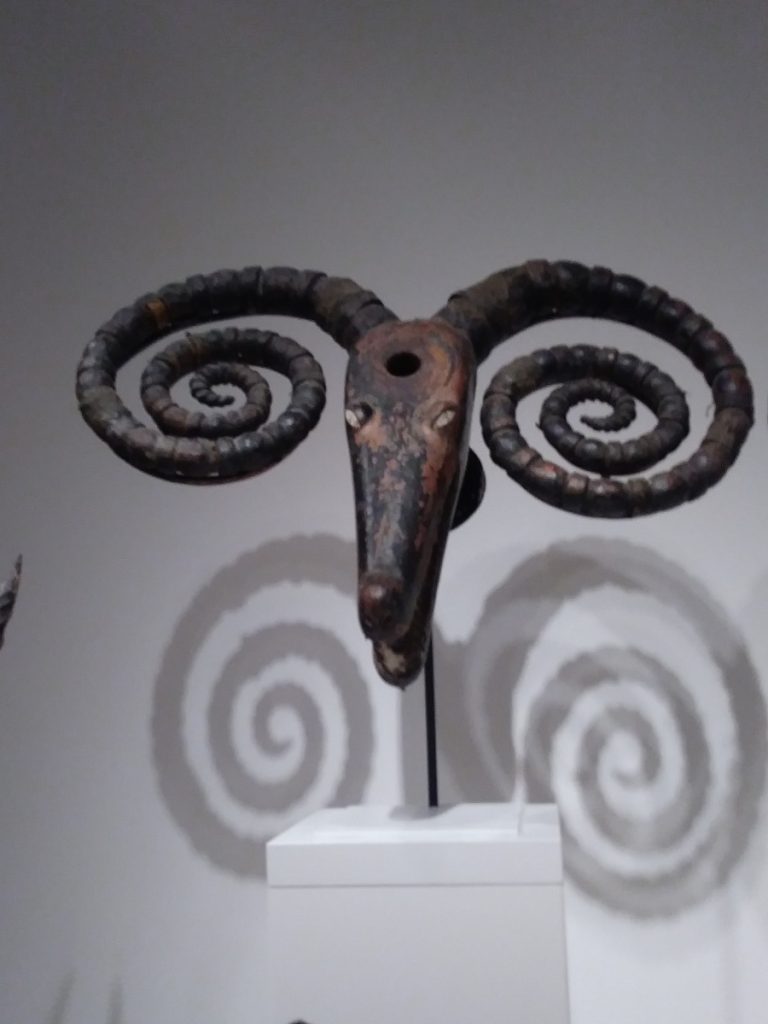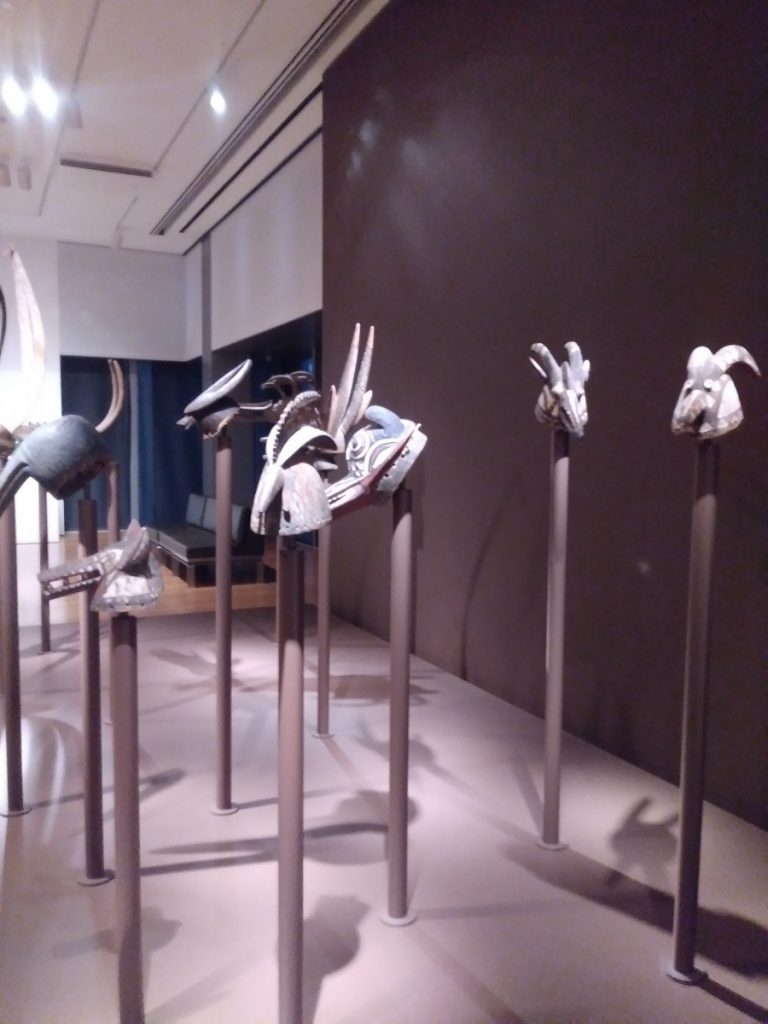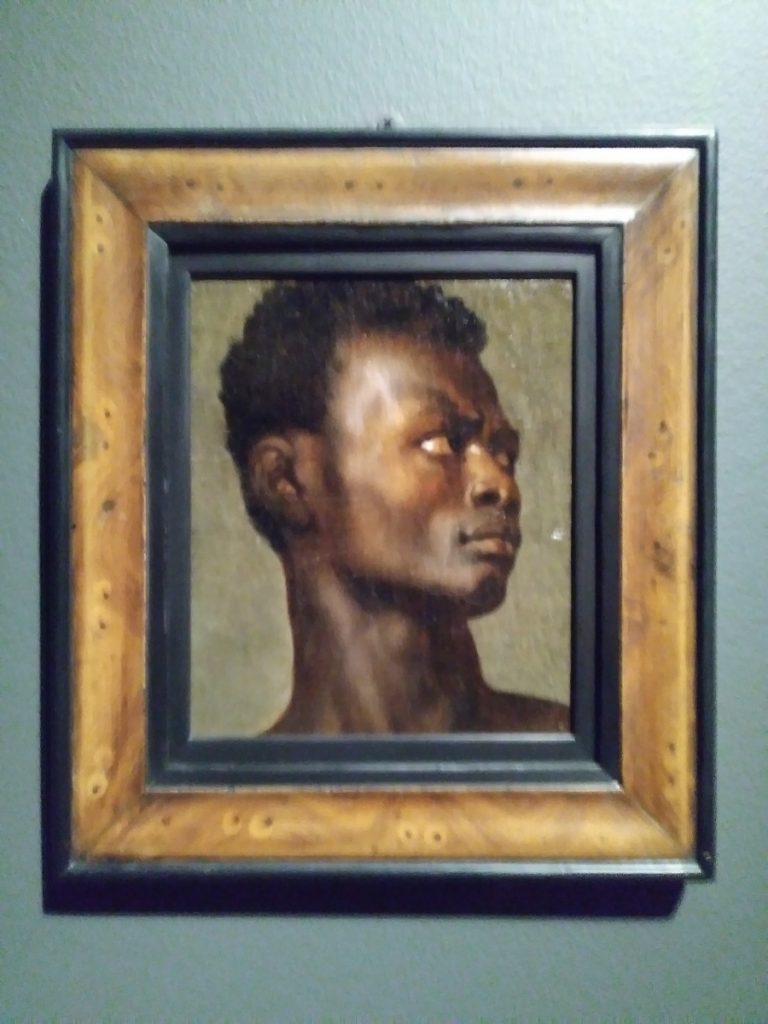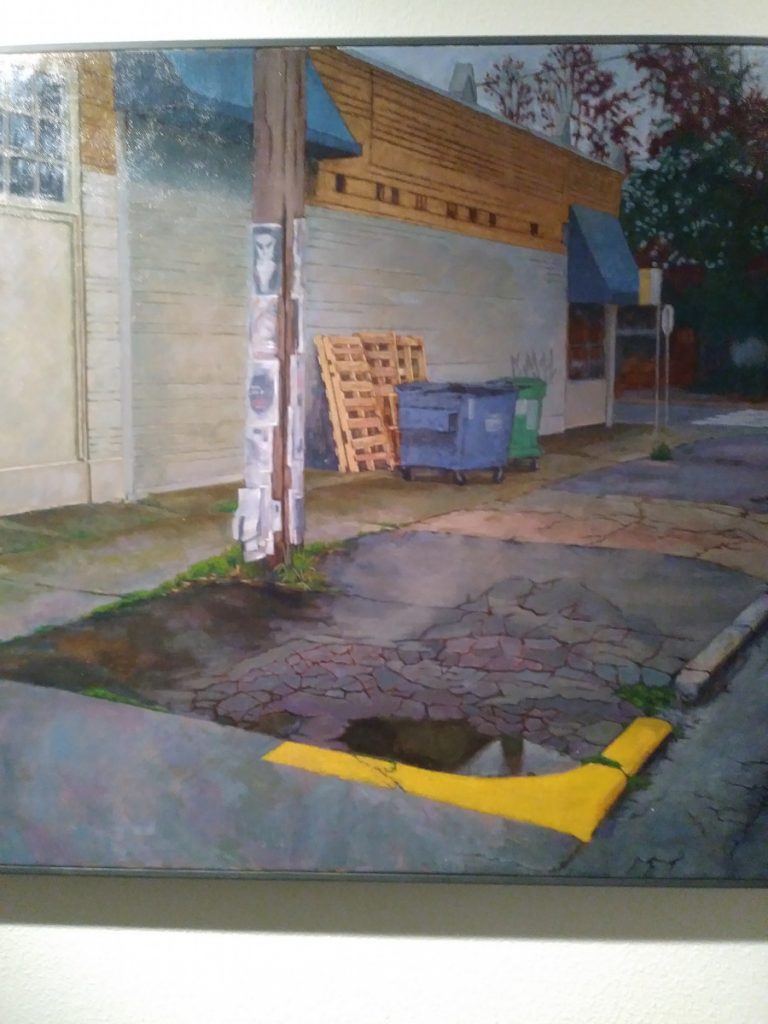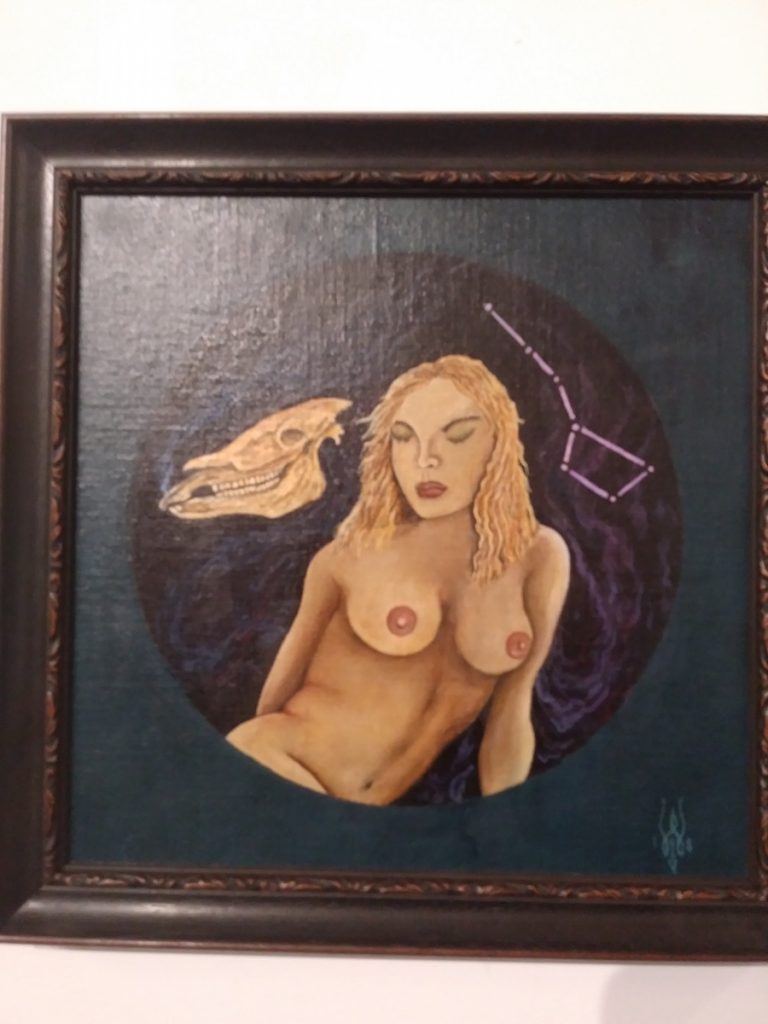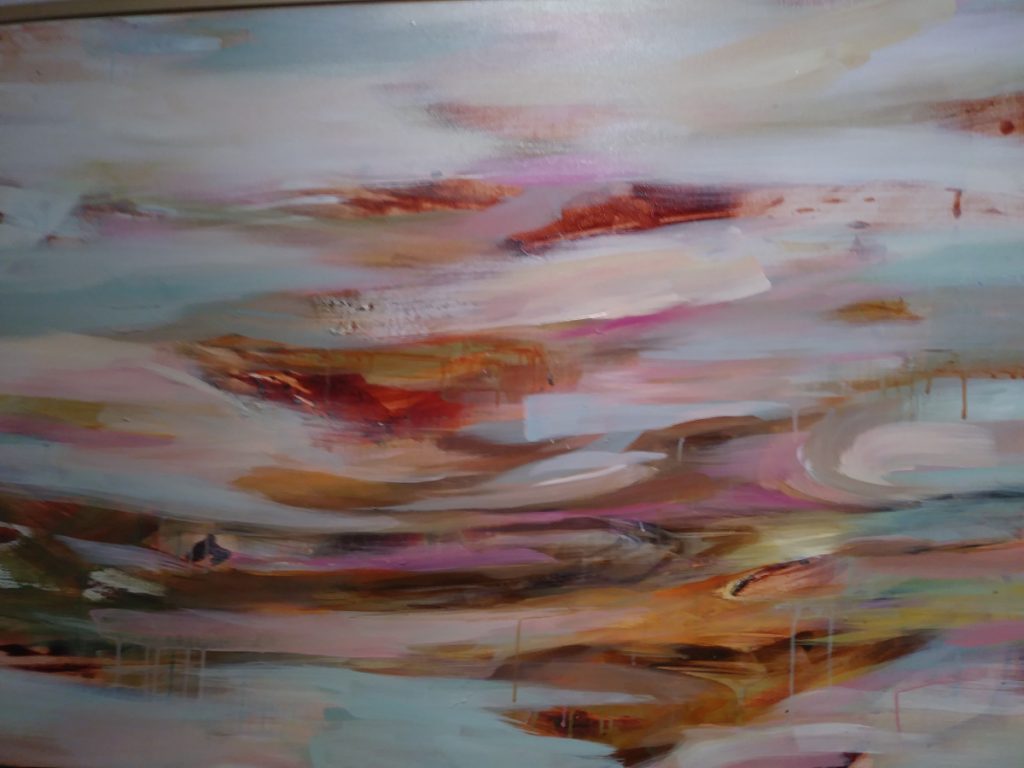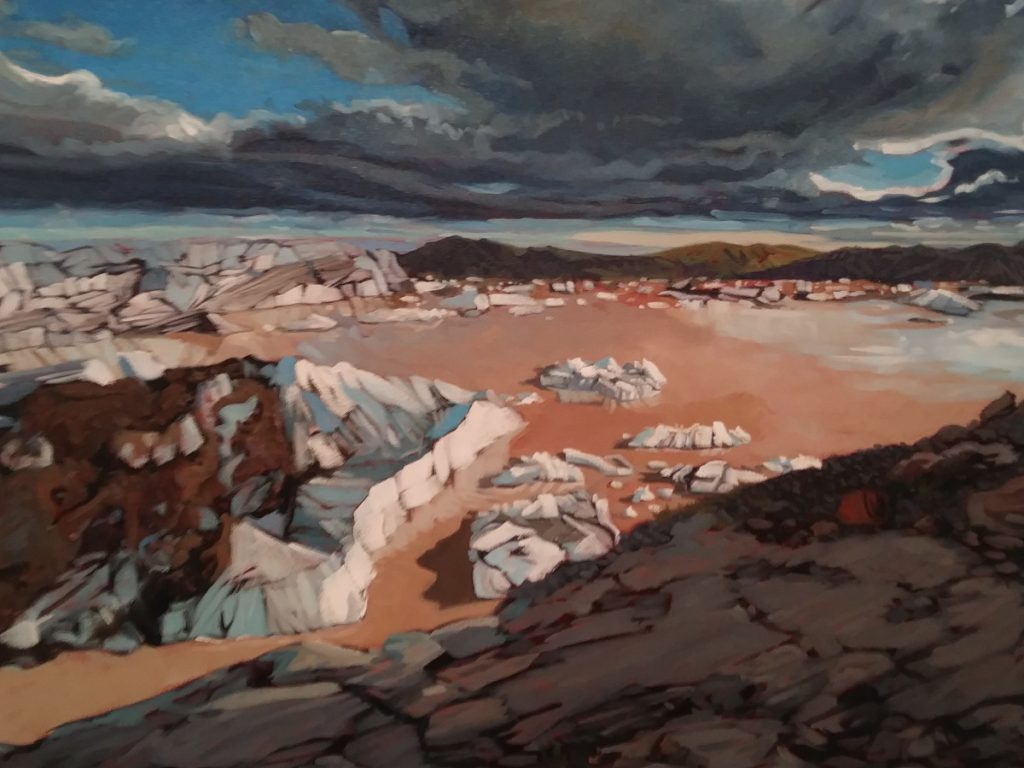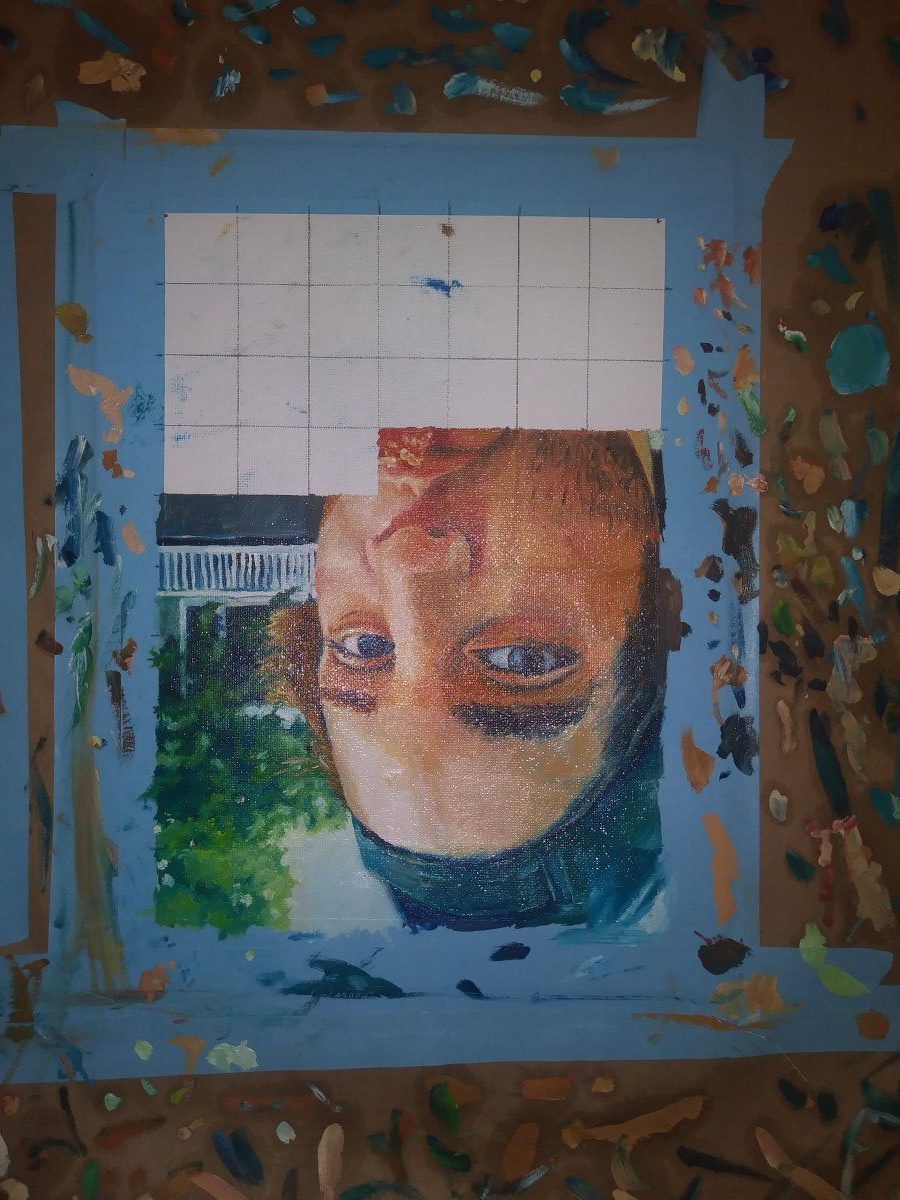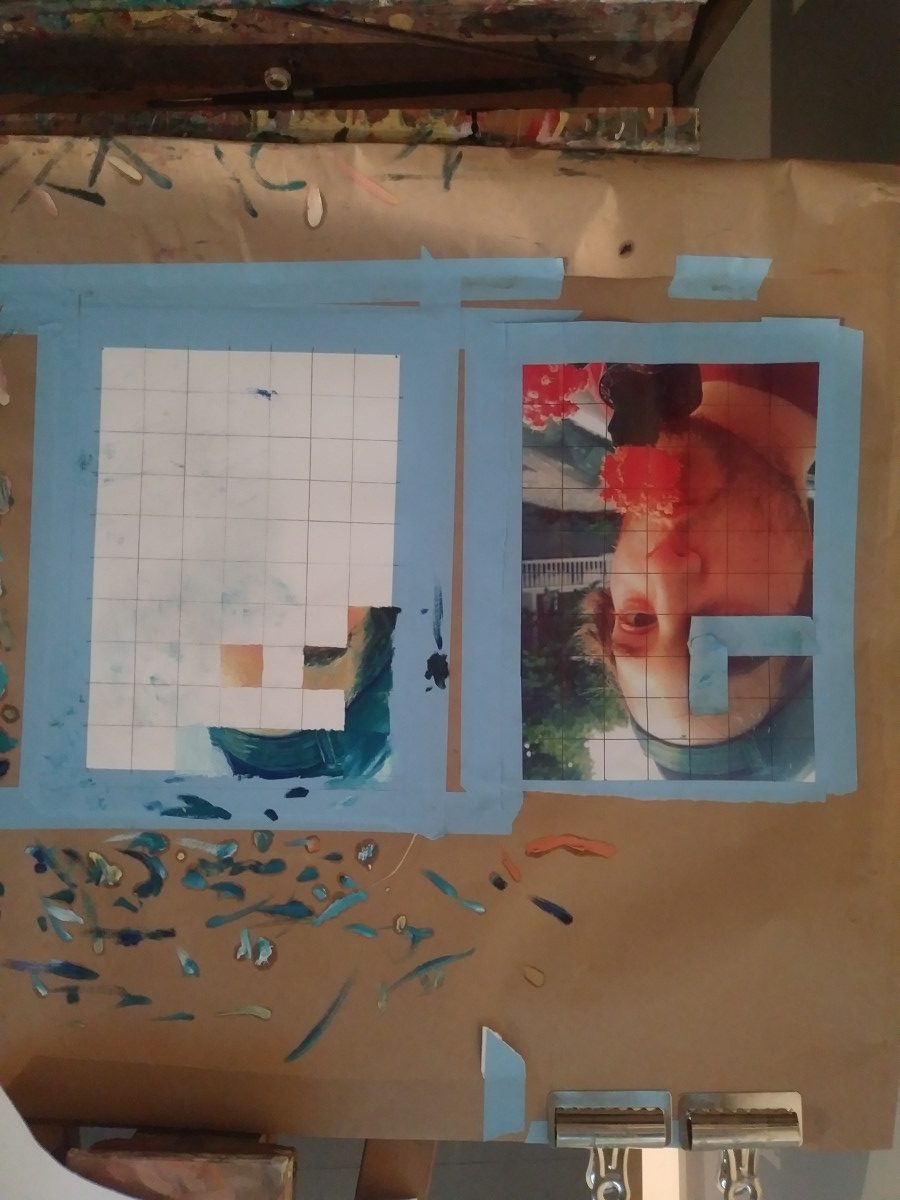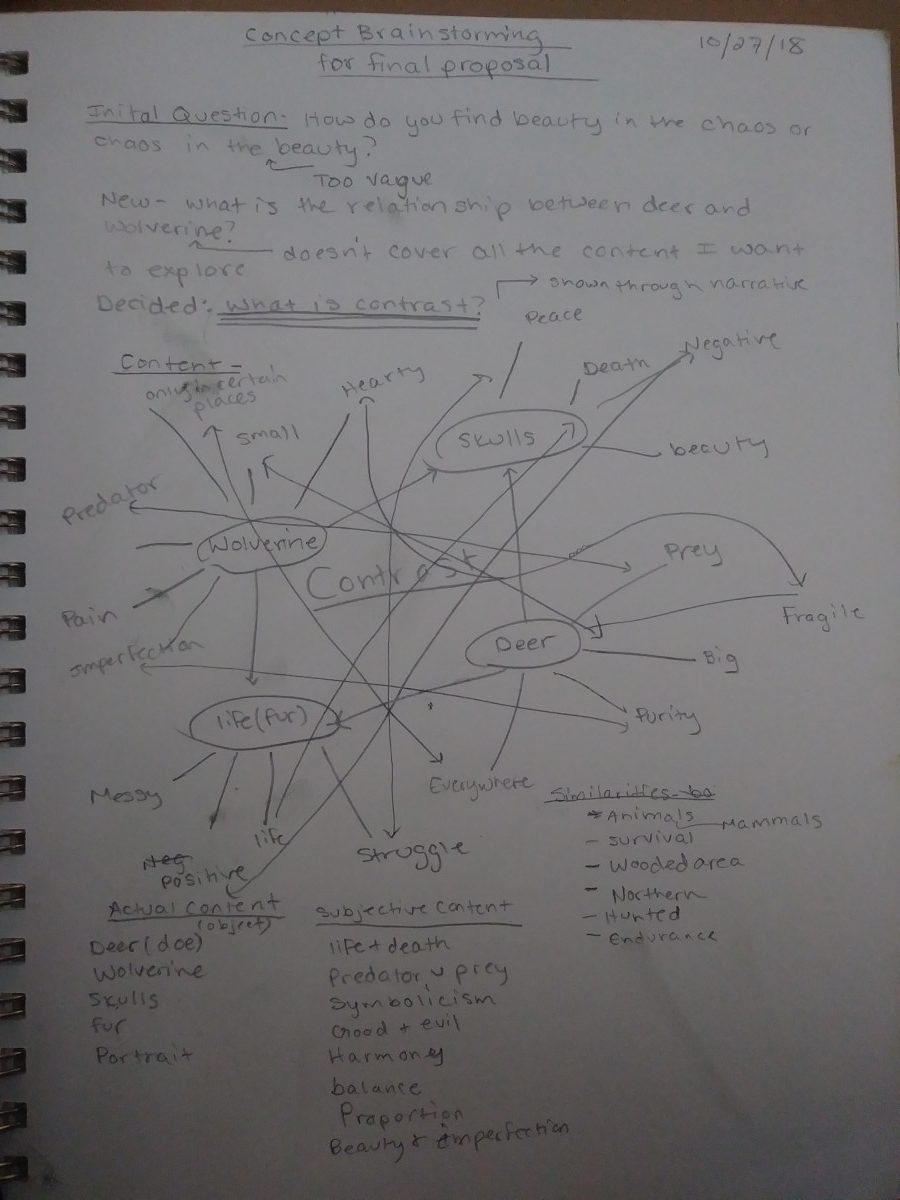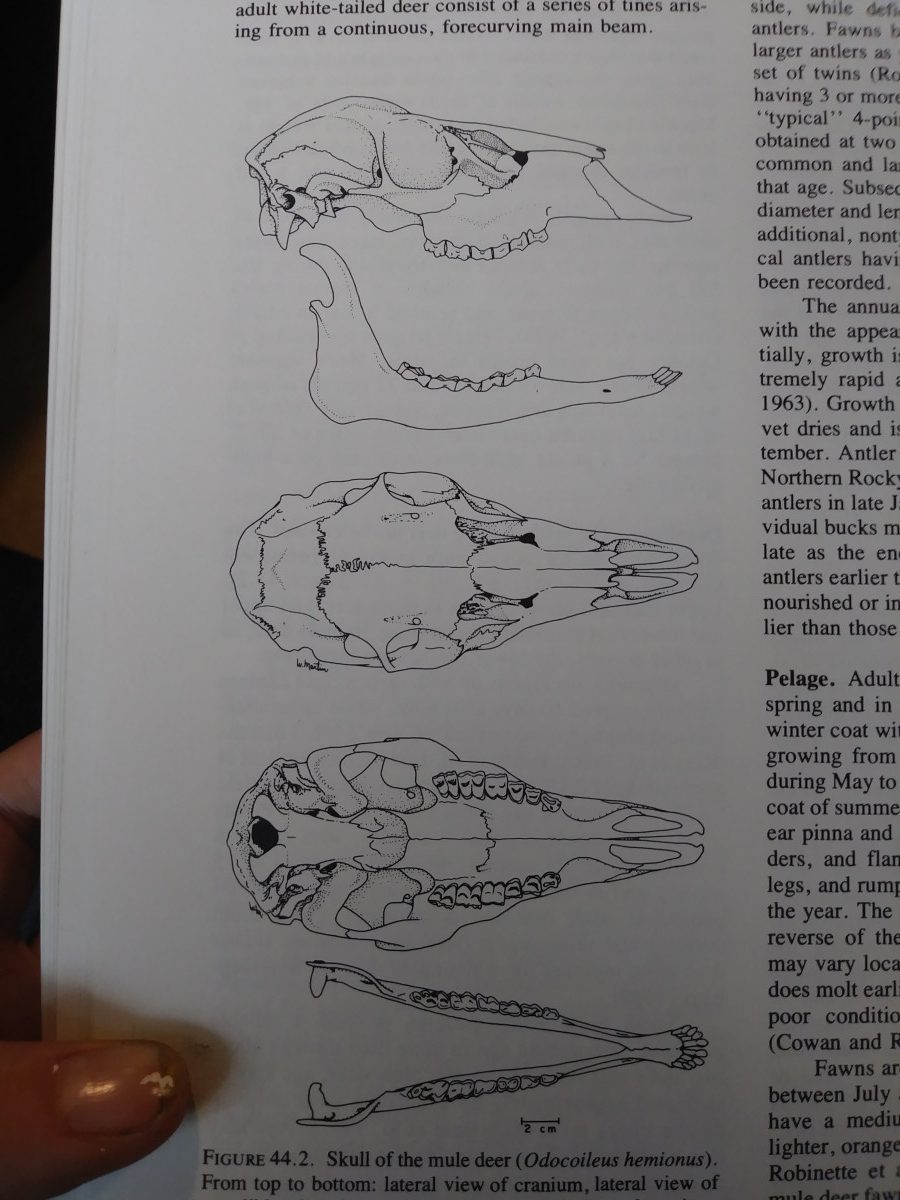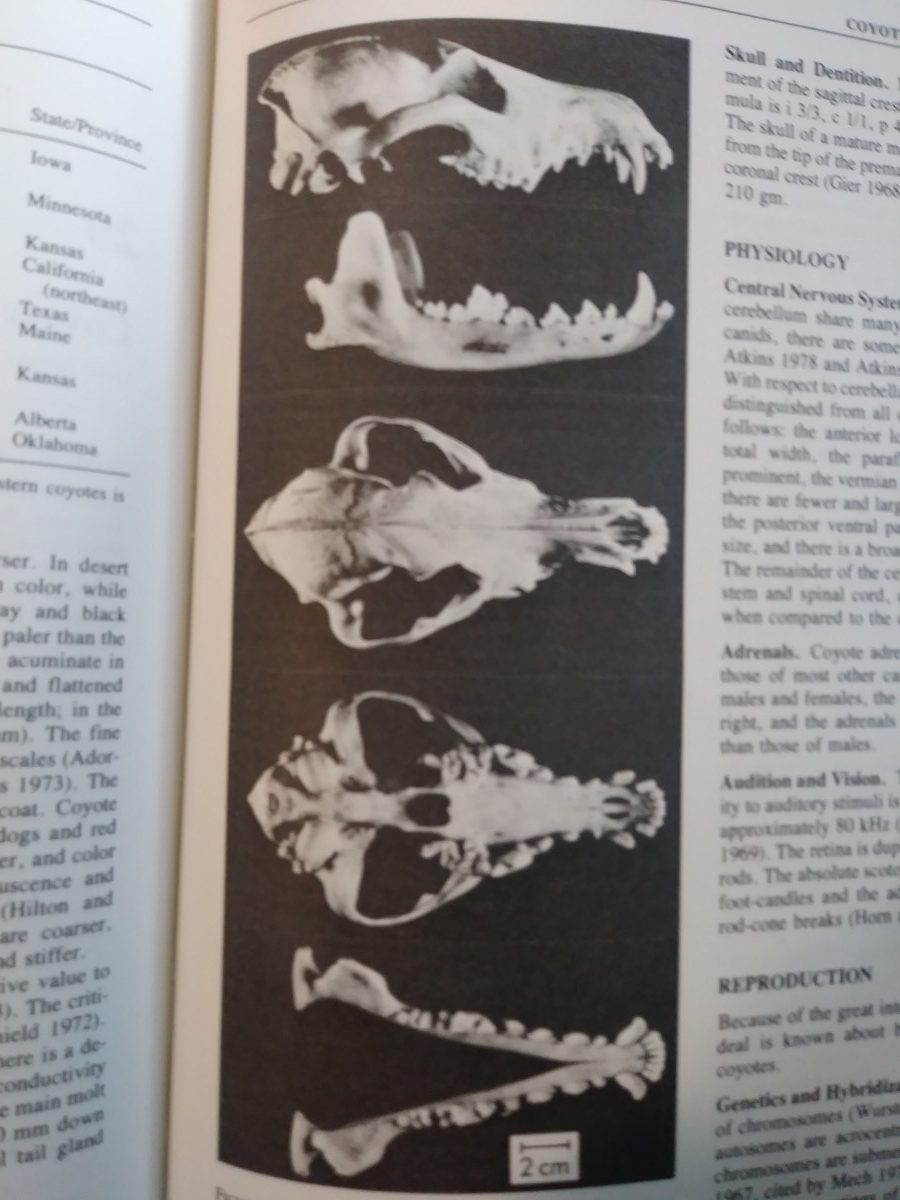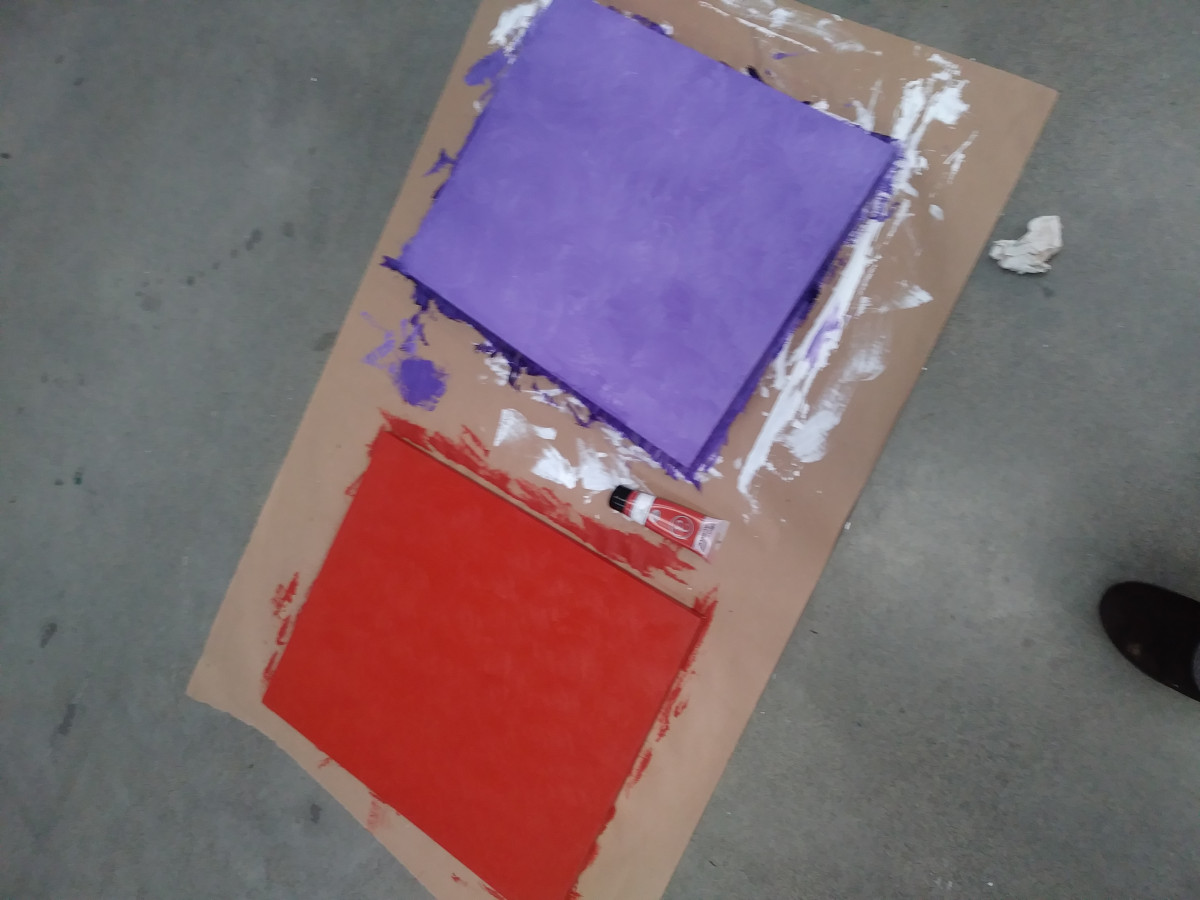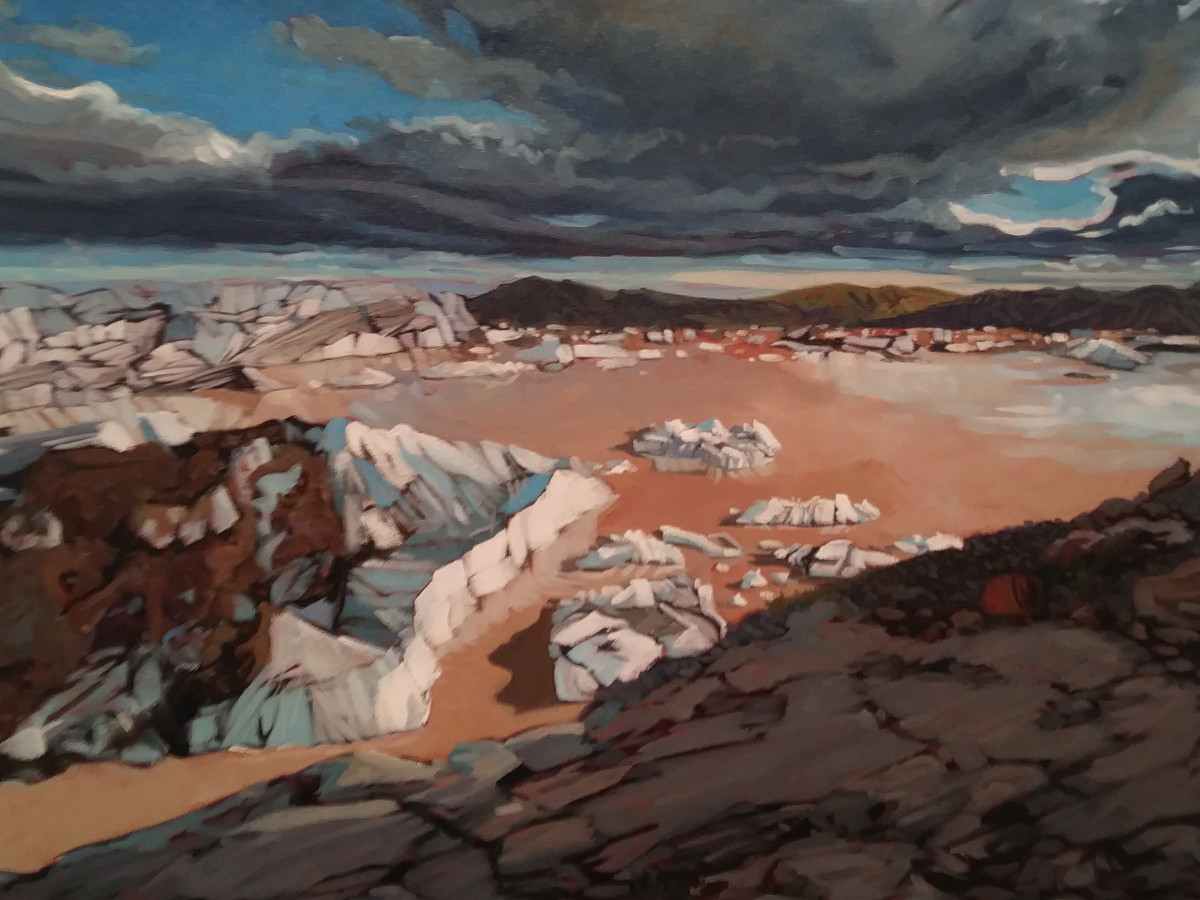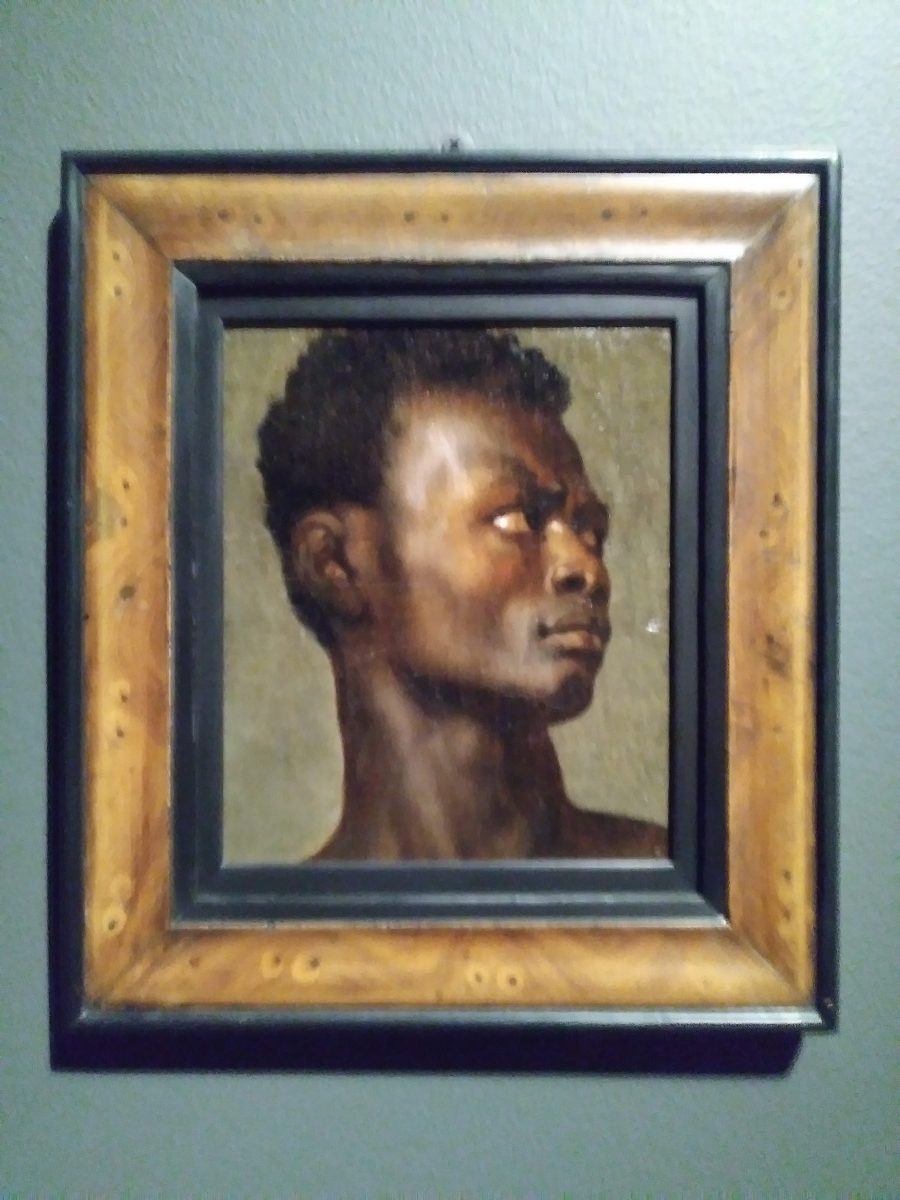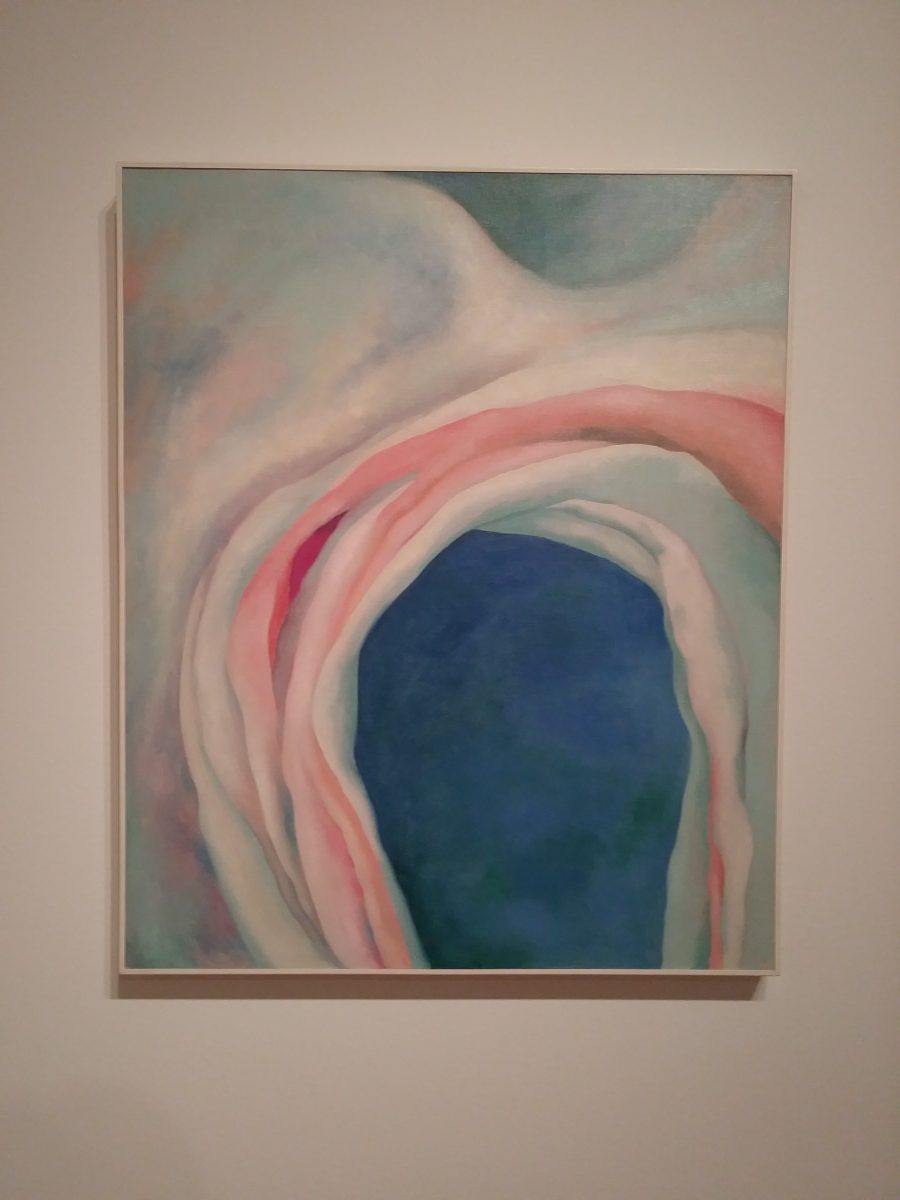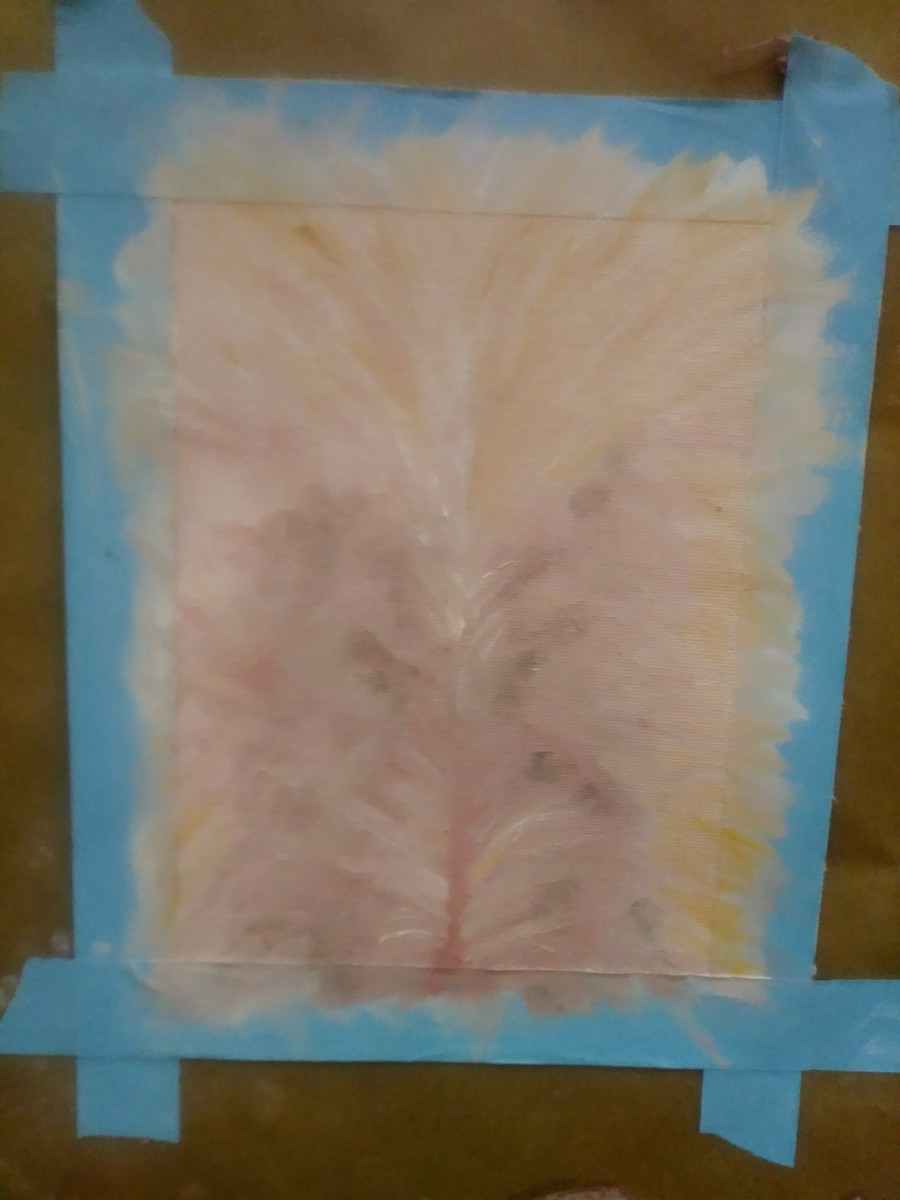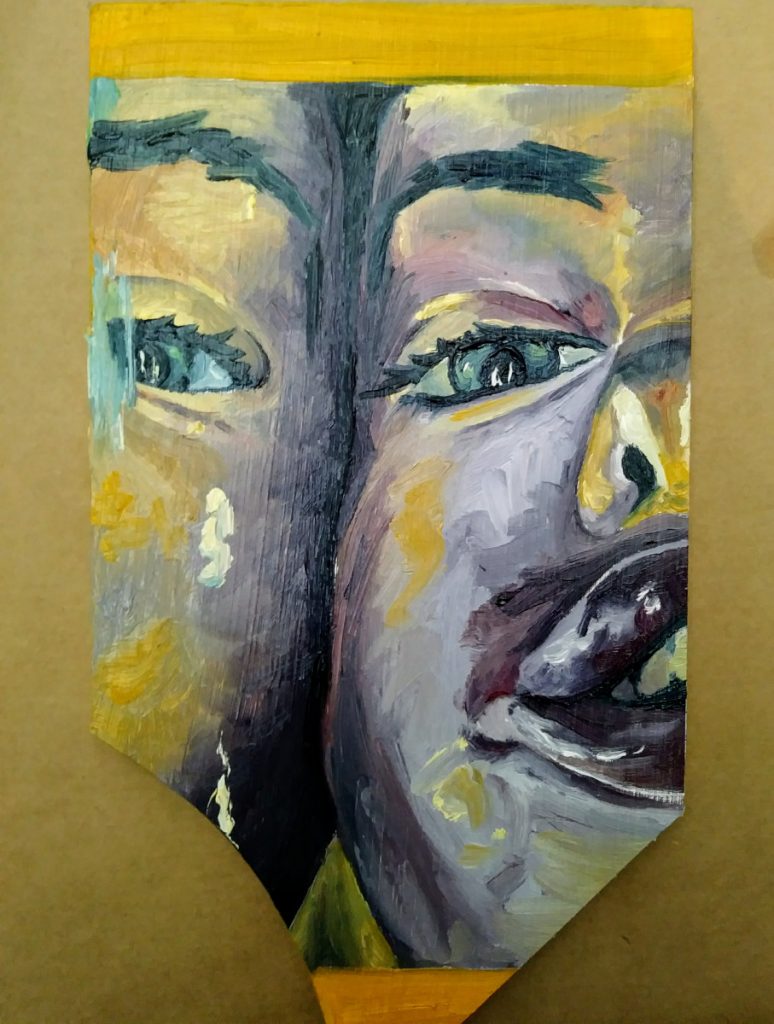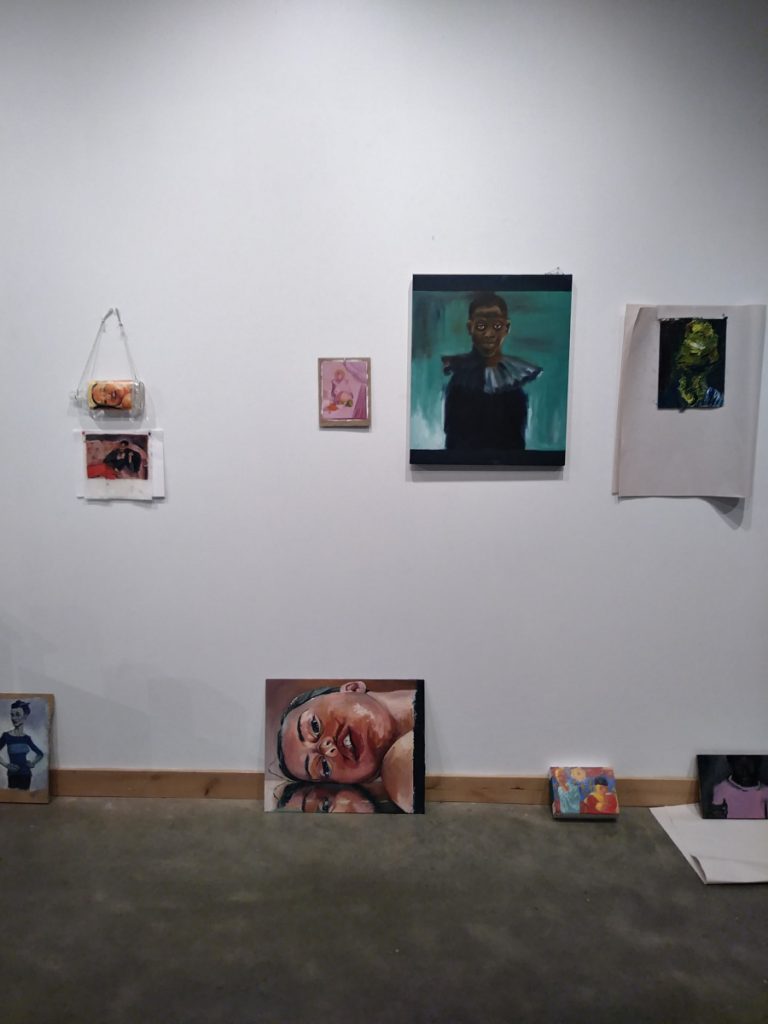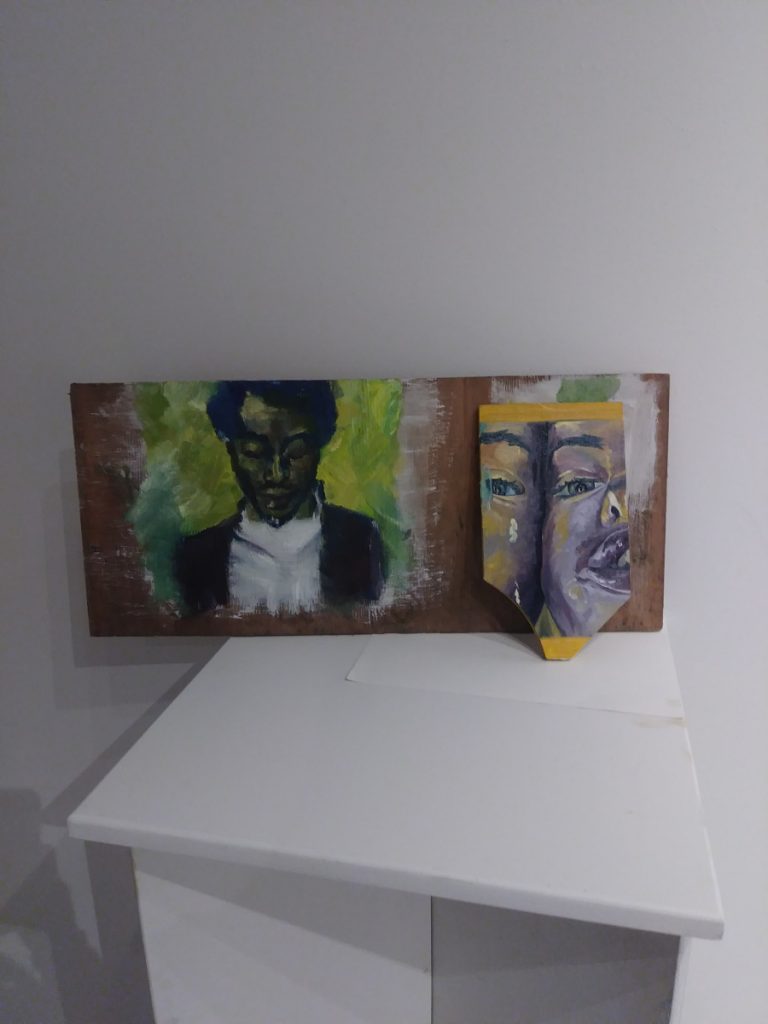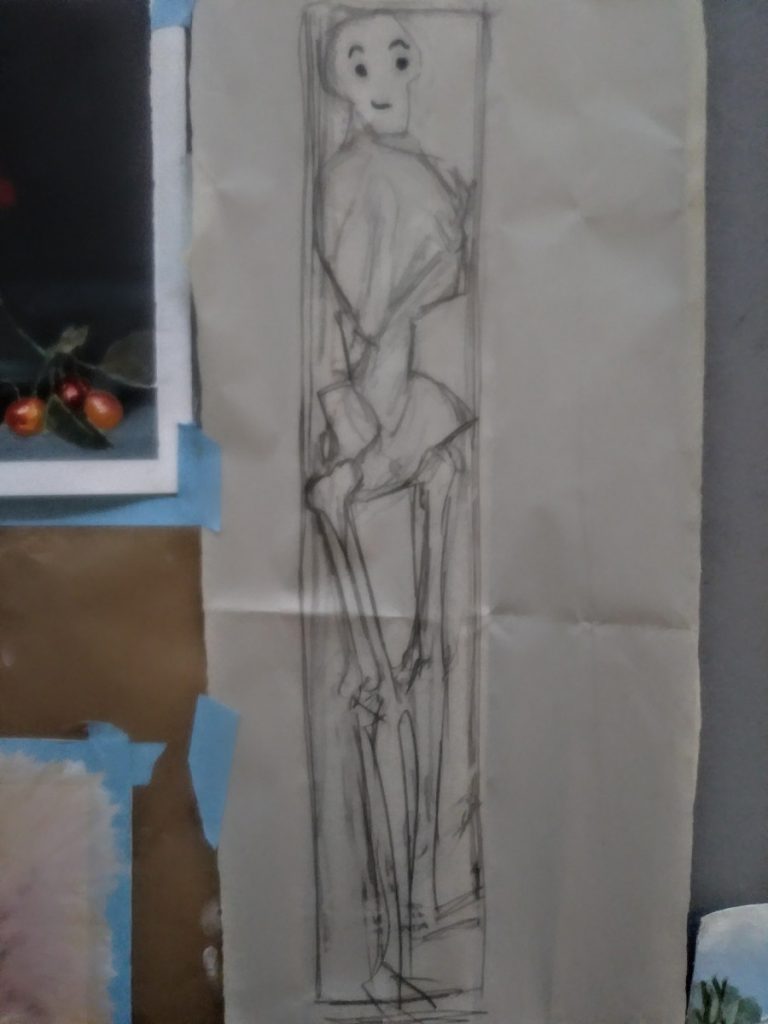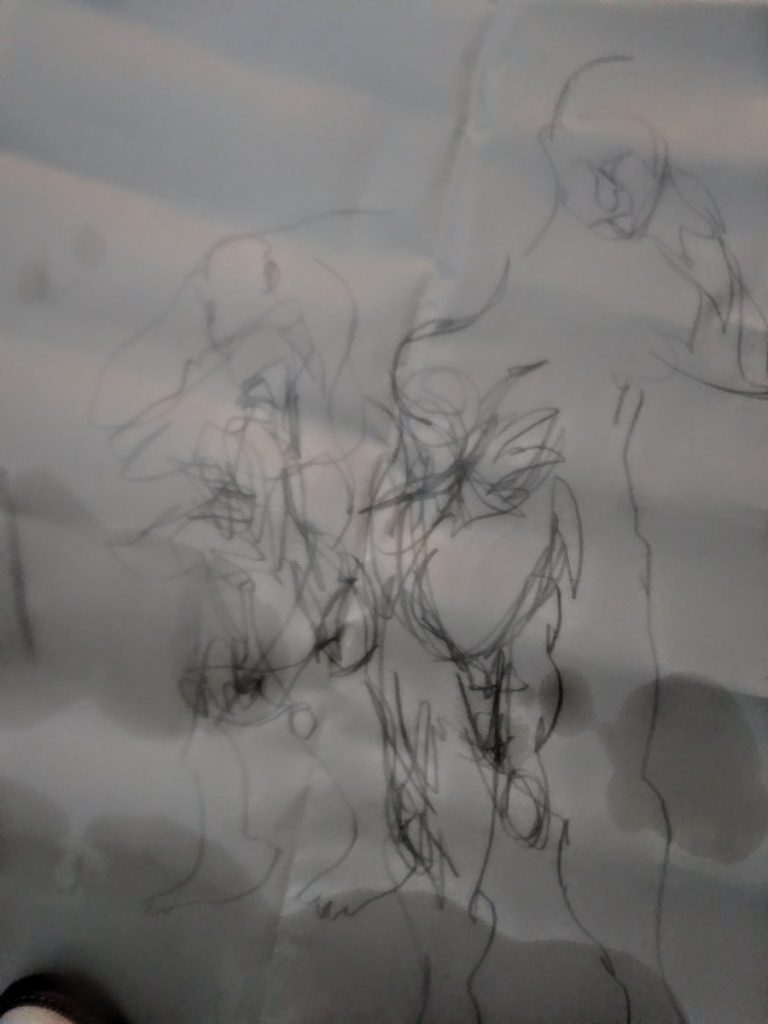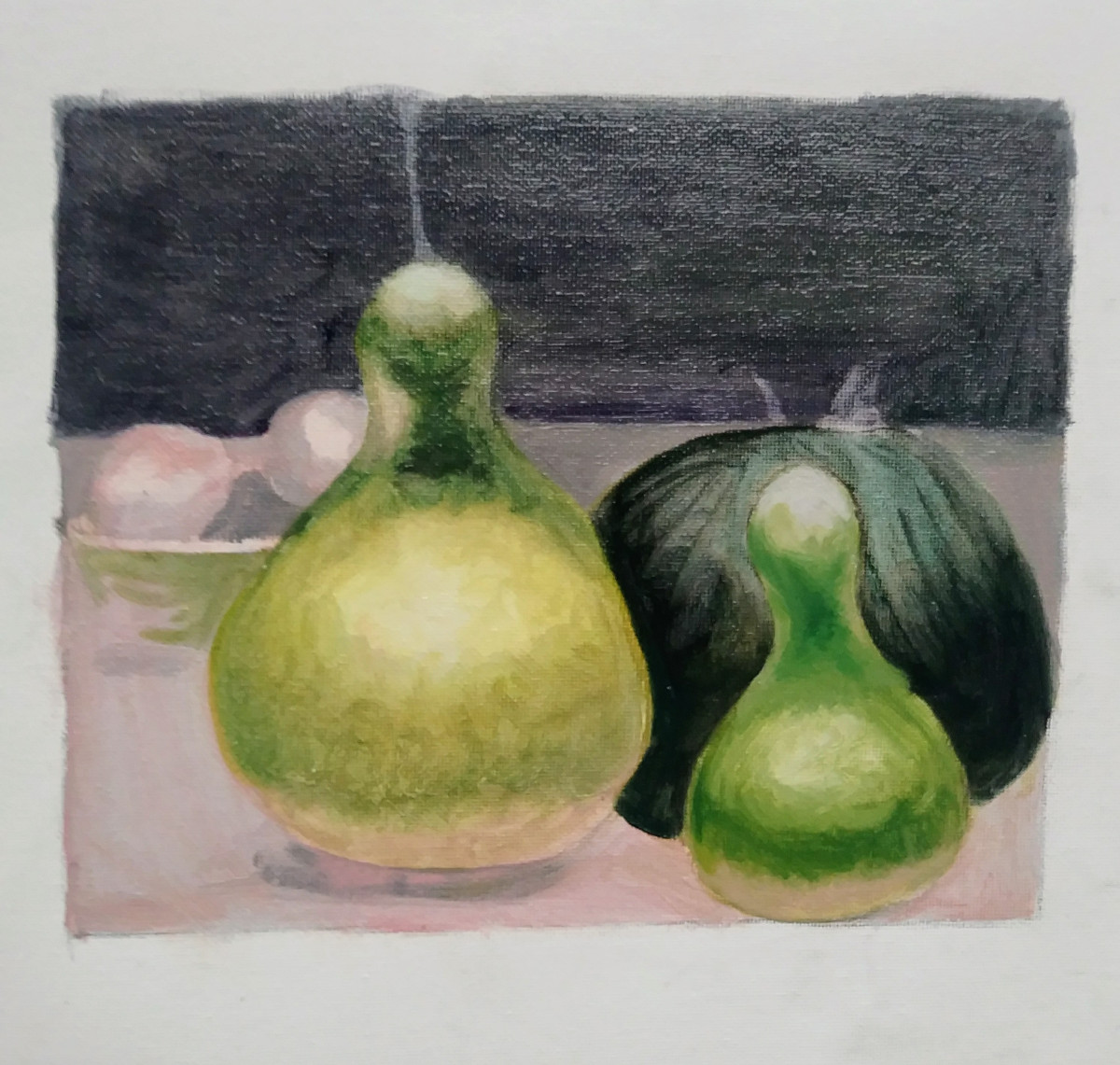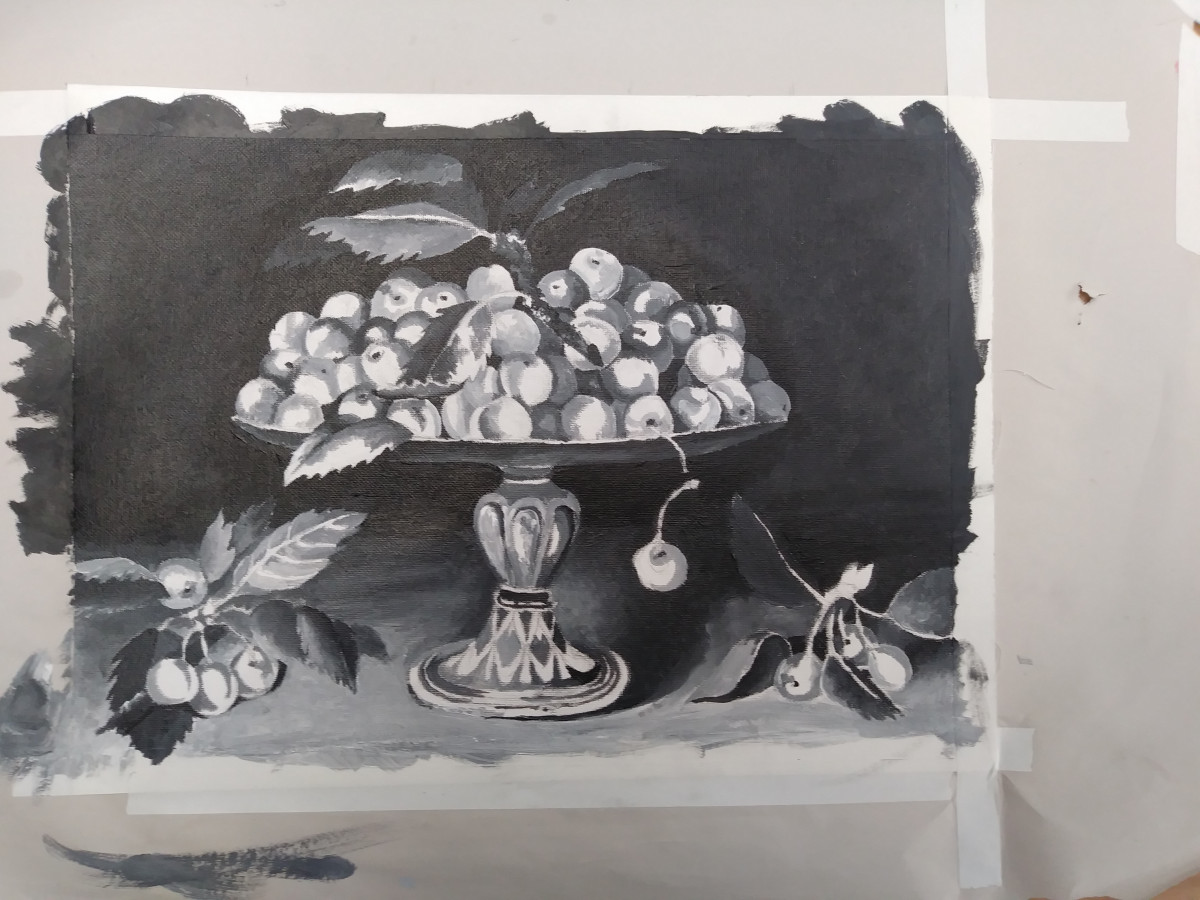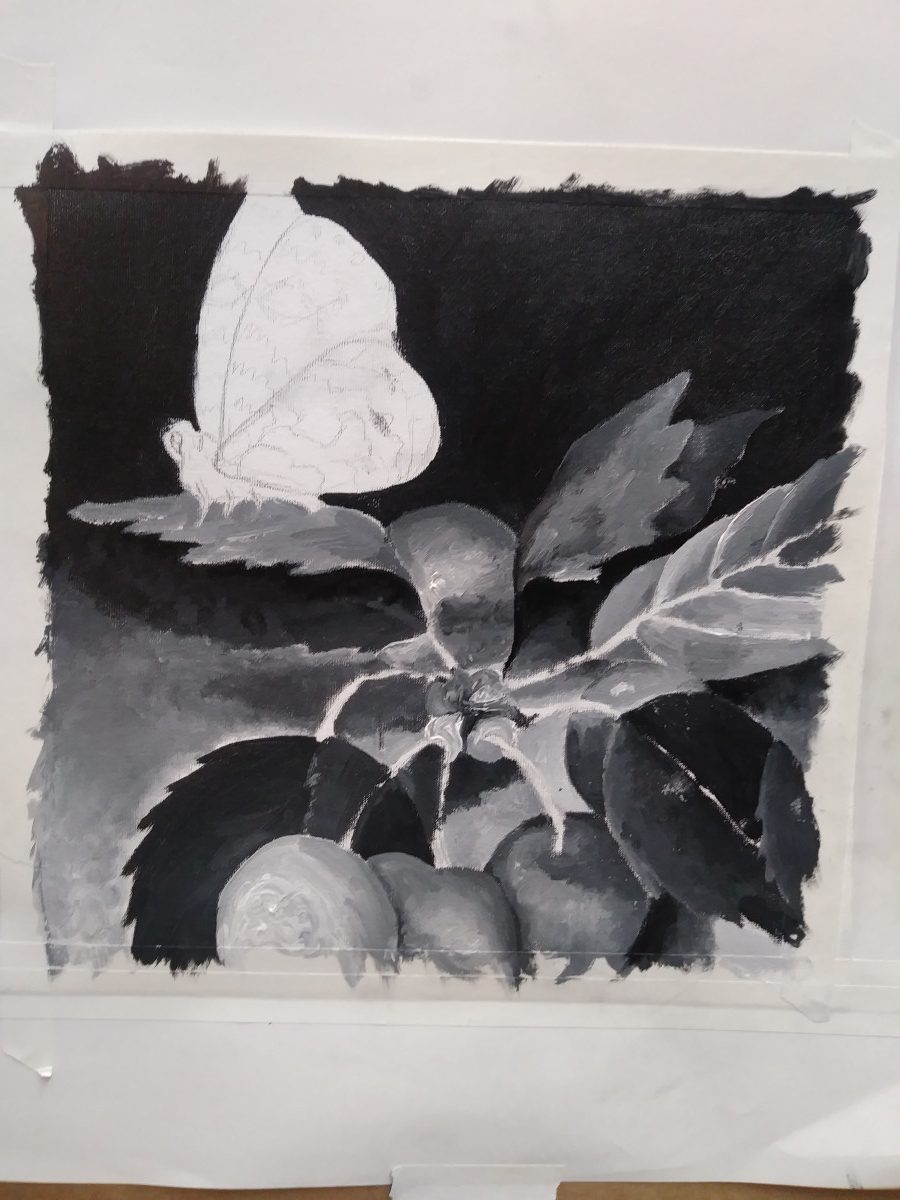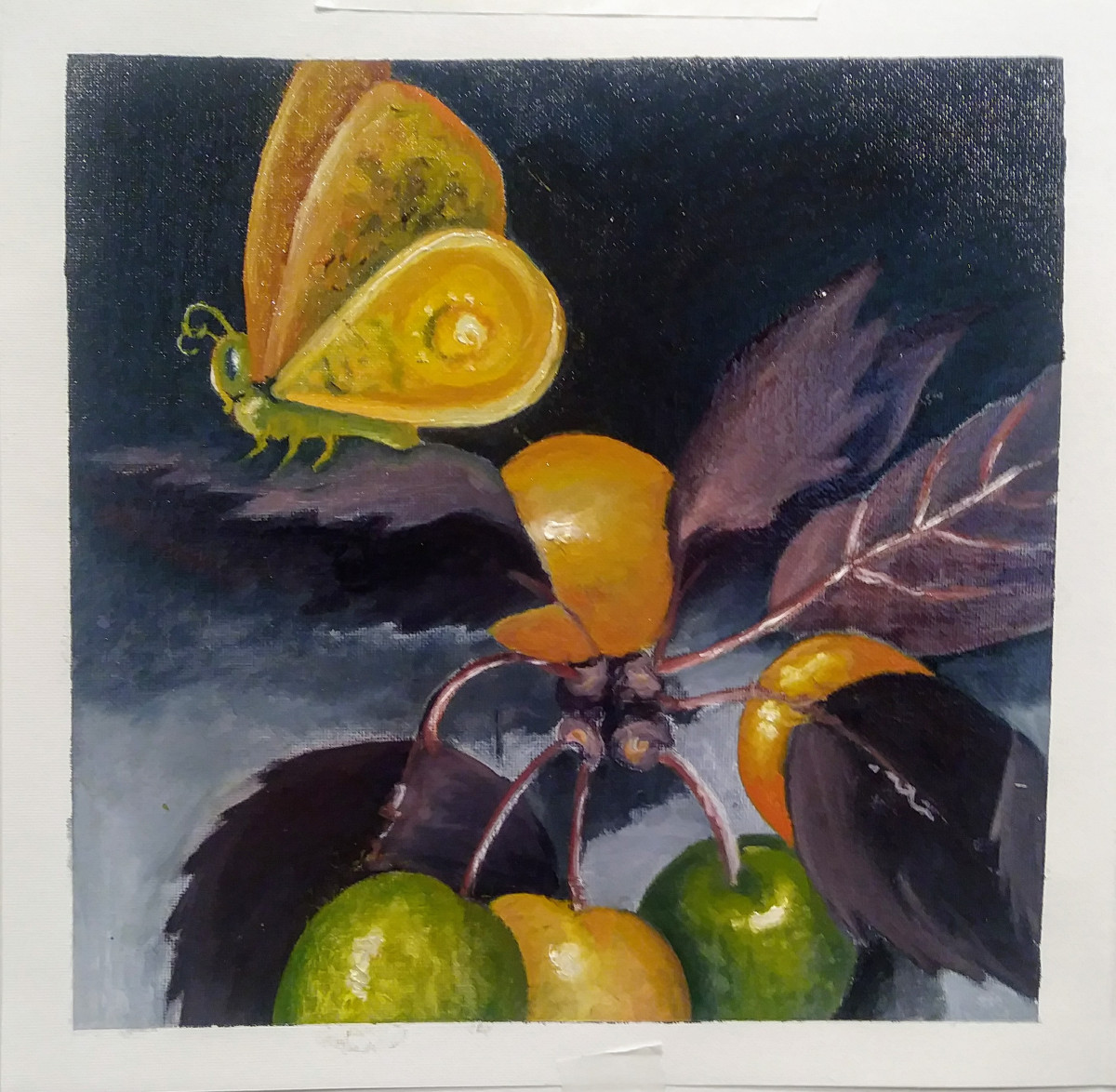- Almost finished work before final critique, hard contour lines, indirect painting of second layer, oil on canvas. (Taken with friend’s camera) 11/25/18
- Almost finished work before final critique, hard contour lines, indirect painting of second layer, oil on canvas. (Taken with friend’s camera) 11/25/18
- Almost finished work after final critique, distorted scrubbing used on second layer, oil on canvas, 12/1/18
- Almost finished work after final critique, distorted scrubbing used on second layer, oil on canvas, 12/1/18
The end of the quarter is almost here, and week nine has been a time for critical evaluation, final touches, and reflection on the broad topic I have attempted to cover through my final project. During Thanksgiving break, I allowed myself time for experimentation and risk-taking, and was tempted to explore the idea of adding two new individual pieces into the mix. (Pictures and details of these attempted pieces can be found in my week 8 studio plan.) I decided to abandon these new developments for a few reasons. Firstly, time management and project constraints would not allow for the same quality of work to each piece with two more to be completed by the end of the quarter. Secondly, after working on them in the earlier stages of progression, I found that my own personal bias with the new characters/animals I had chosen to depict warped my perception of their form and did not support the idea of the project. Unlike Little Bear or The Angry Beavers I’ve never watched Will E. Coyote or Bambi in depth, and therefore felt indifferent about the stereotypes and symbolic references that these characters imply to many people. That indifference gave me the ability to pull them out of their specific context easier within my work, and view them with a neutral perspective.
On Wednesday of this week, we had our final critique before the show, and recieved some outside feedback given by a guest critiquer from the University of Washington. This was the most intensive review of the class’s entire body of work so far, with fifth teen minutes devoted to each student’s work. Our projects were critiqued as finalized pieces, and included commentary from Nate and Shaw. The first two images of this post are of the paintings before entering critique, the second two are of after critique, with minor adjustments made. During my projects’s review, I was given many helpful points of feedback about composition, figure/ground relationship, content, and areas that need improvement. The composition was noted as similar to photoshop or collage, without much figure/ground relations throughout either painting. Because of this disconnect, the pieces seem a bit too literal, too blunt, or fragmented when theoretically read.
To be honest, I feel that I have discovered my first tastes of how good abstraction might enrich my work after this critique, and have gained acceptance that I have a long ways to go before understanding it fully. I have never taken an art class that has been so immersed in abstraction and contemporary art. Throughout this quarter, I have struggled with many of the theoretical ideas we’ve discussed in class, such as pure abstraction, ingenue vs. genuine art, and subtle vs. literal content. I feel that I have overthought a few ideas throughout this project, and became stuck in my own interpretations of ideas a few times, but those mistakes have helped me reflect on new ways of thinking. When personally reflecting on my own work after receiving feedback, I began to realize how literal and blunt these paintings were, although while making them, I felt that my compositions were subtle and complex. This has reminded me to not get stuck within my own personal vision of what a finished project could look like, because the best content comes naturally and is not forced.
Although this project is too late in its development to change fundamental decisions about the way I chose to paint and think about it, I attempted to add a few final ideas and risks within the paintings to add to their theoretical content. I have chosen to blur the boarders that keep each form separate from each other by using pigment heavily thinned with linseed oil medium, in order to allow hints of a figure ground relationship between layers. Aesthetically, this will help the audience to view the paintings as unified compositions, with less of a disconnect between the two individual ideas each painting is depicting. It will also reset each viewer’s point of focus (background in focus, foreground is blurred), which will force them to view each composition in a different way. Theoretically, it hints at a few different subliminal meanings to the more literal ideas this work is displaying. The breaking of boundaries between layers implies an intermingling between the symbolism and objectivism I am investigating, while the variation of focus between objects implies its relevance to the topic at this current moment in cultural and artistic history. Physically, this alteration may not fully achieve the goals I hope for with such little time to complete, but I feel that the knowledge I have learned from my past choices and mistakes is being applied within it.
Overall, this class has been a journey of uncertainty and feeling lost in the process, but has given me a sense of clarity of different ways of thinking for the future. I’m excited for the show and to celebrate all the work and growth that my colleagues and I have endured over the last ten weeks within our own experiences as artists. The reason an artist creates and the choices (good or bad) that they make during their process are just as important as the end product that they produce.

